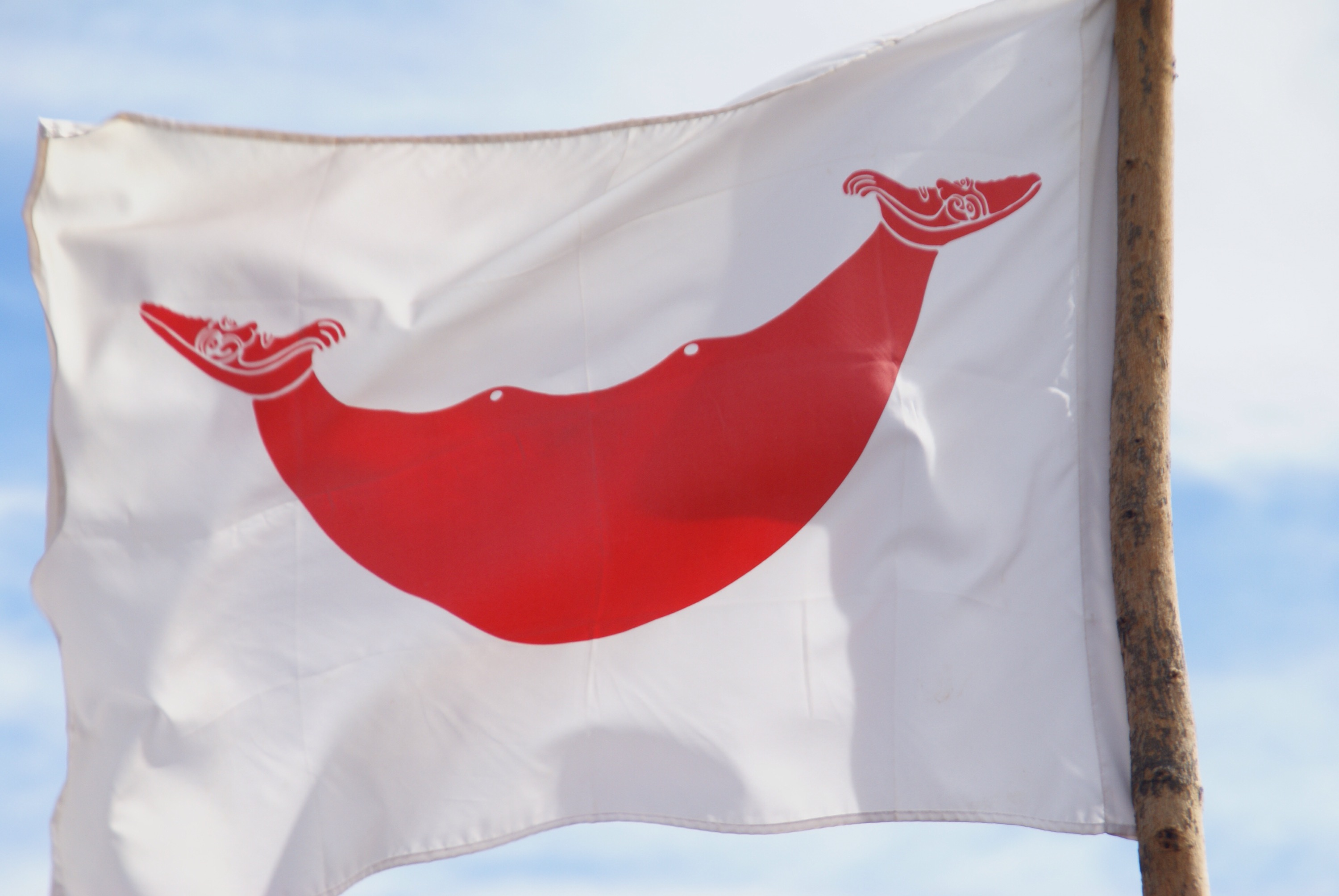
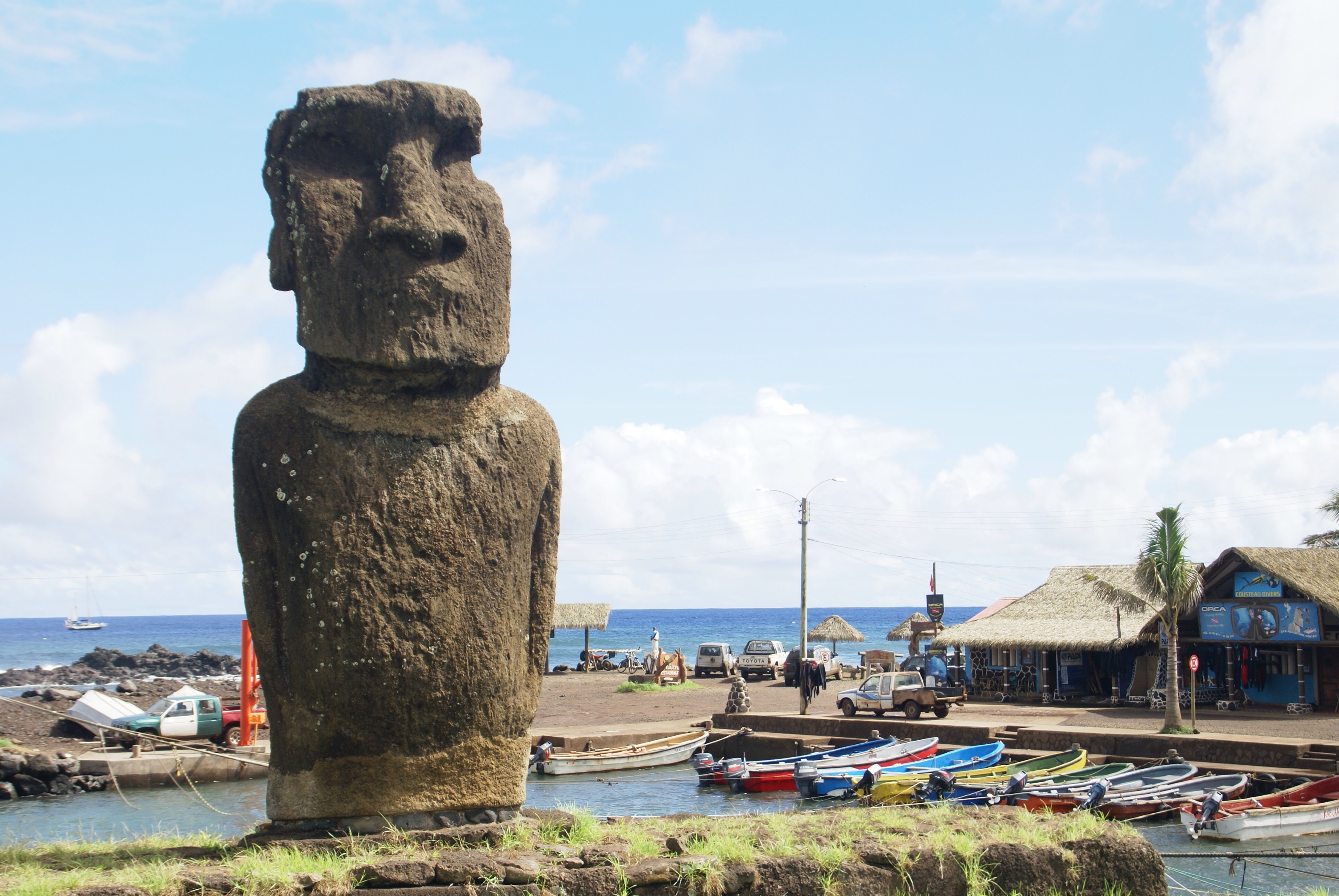
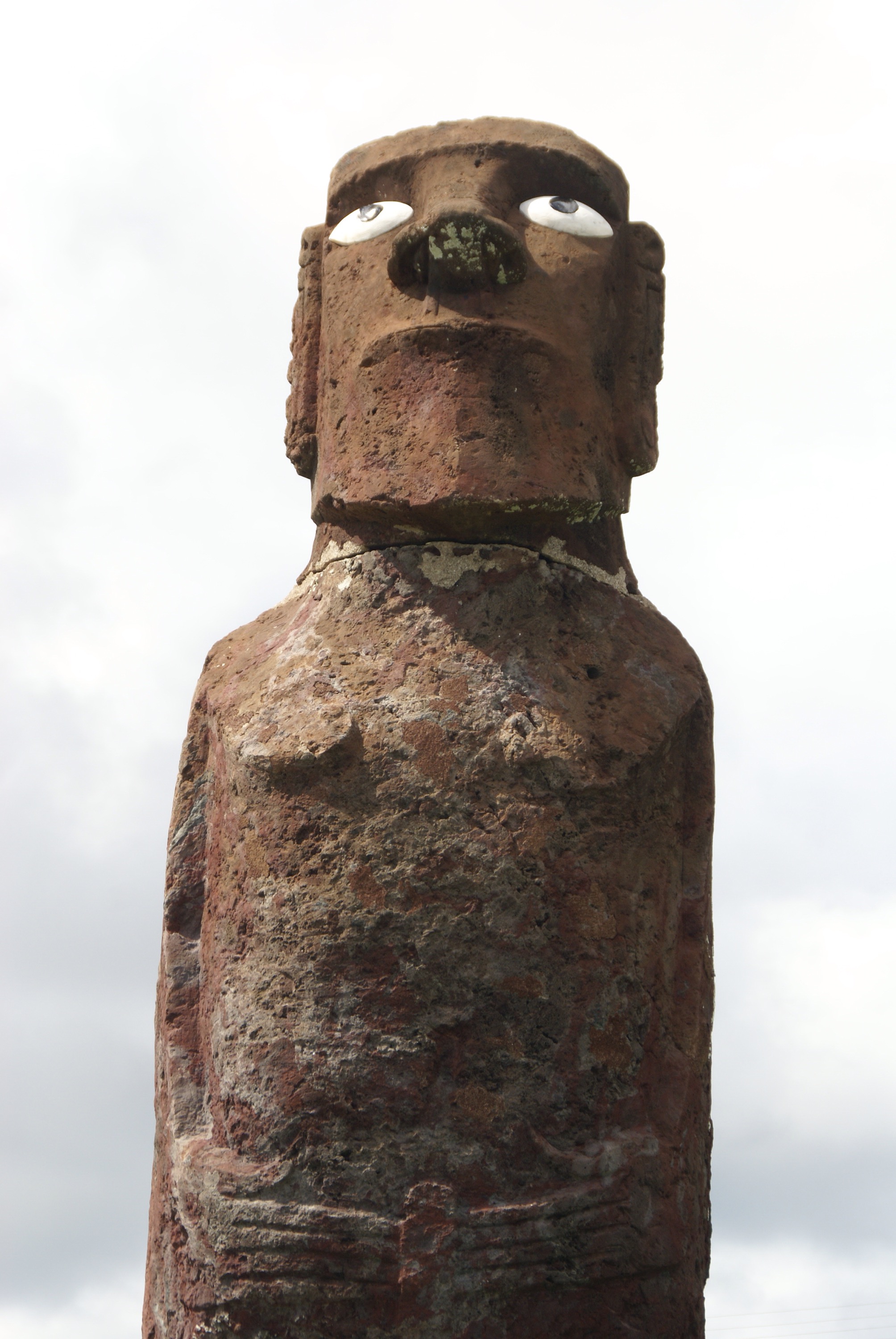
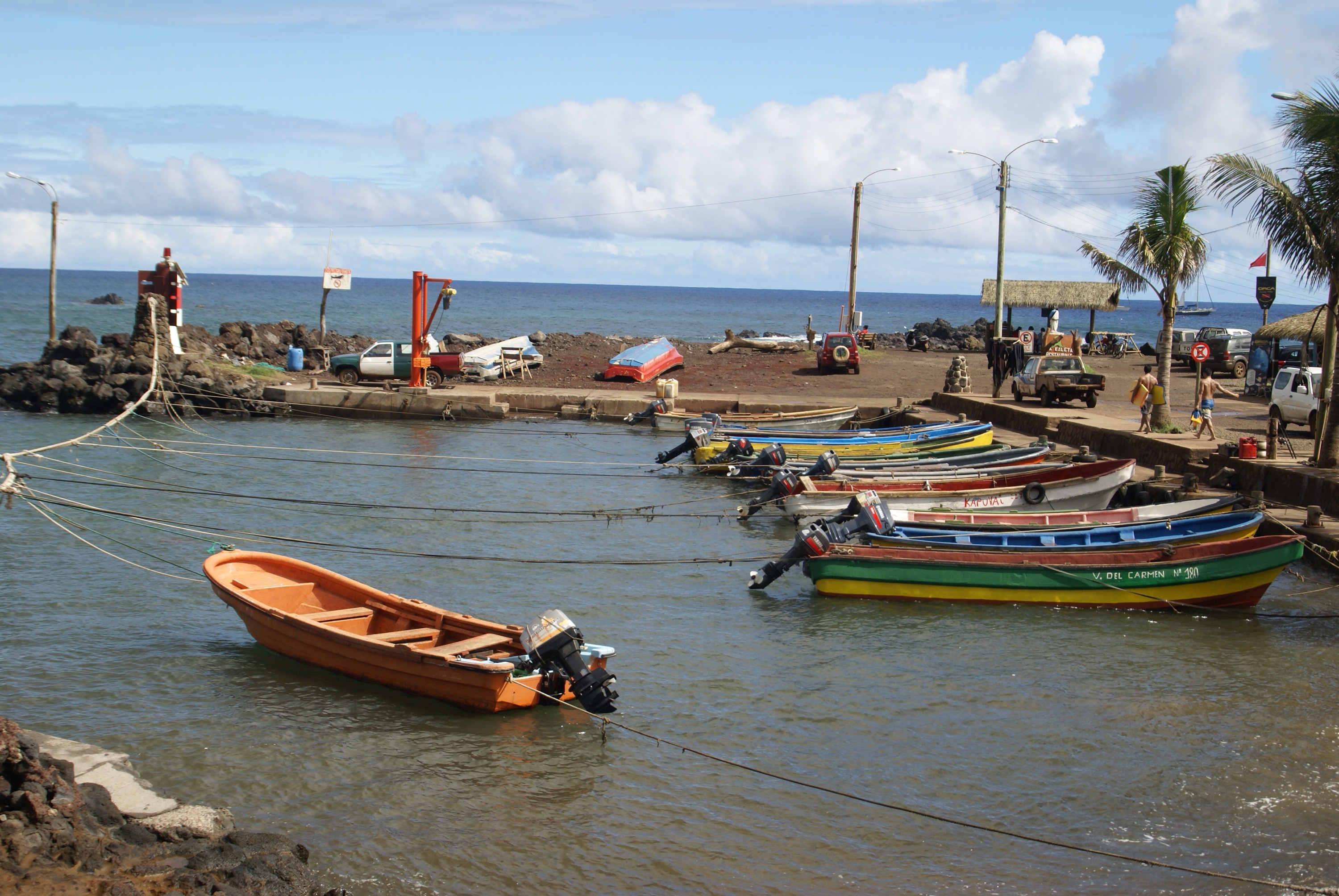
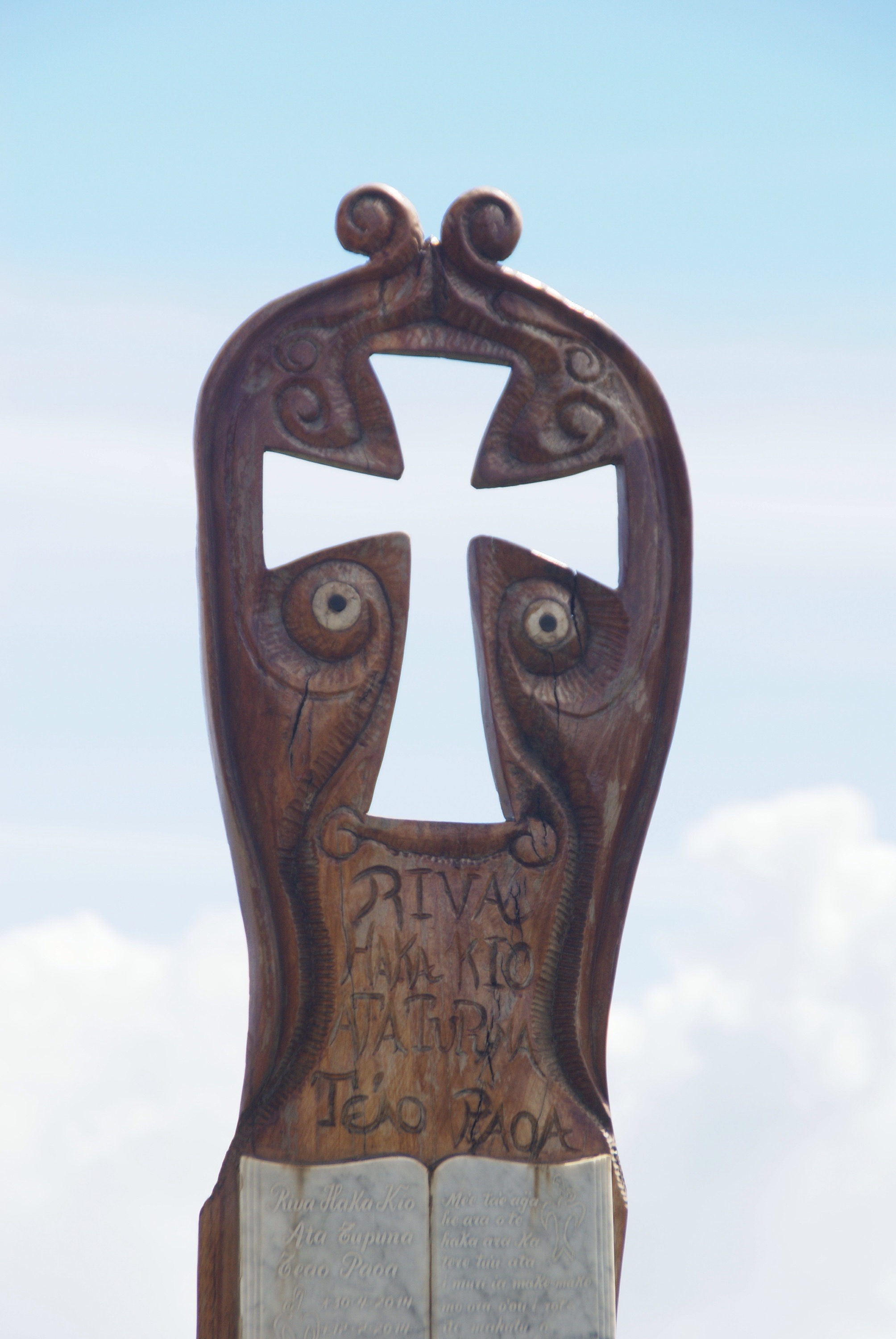
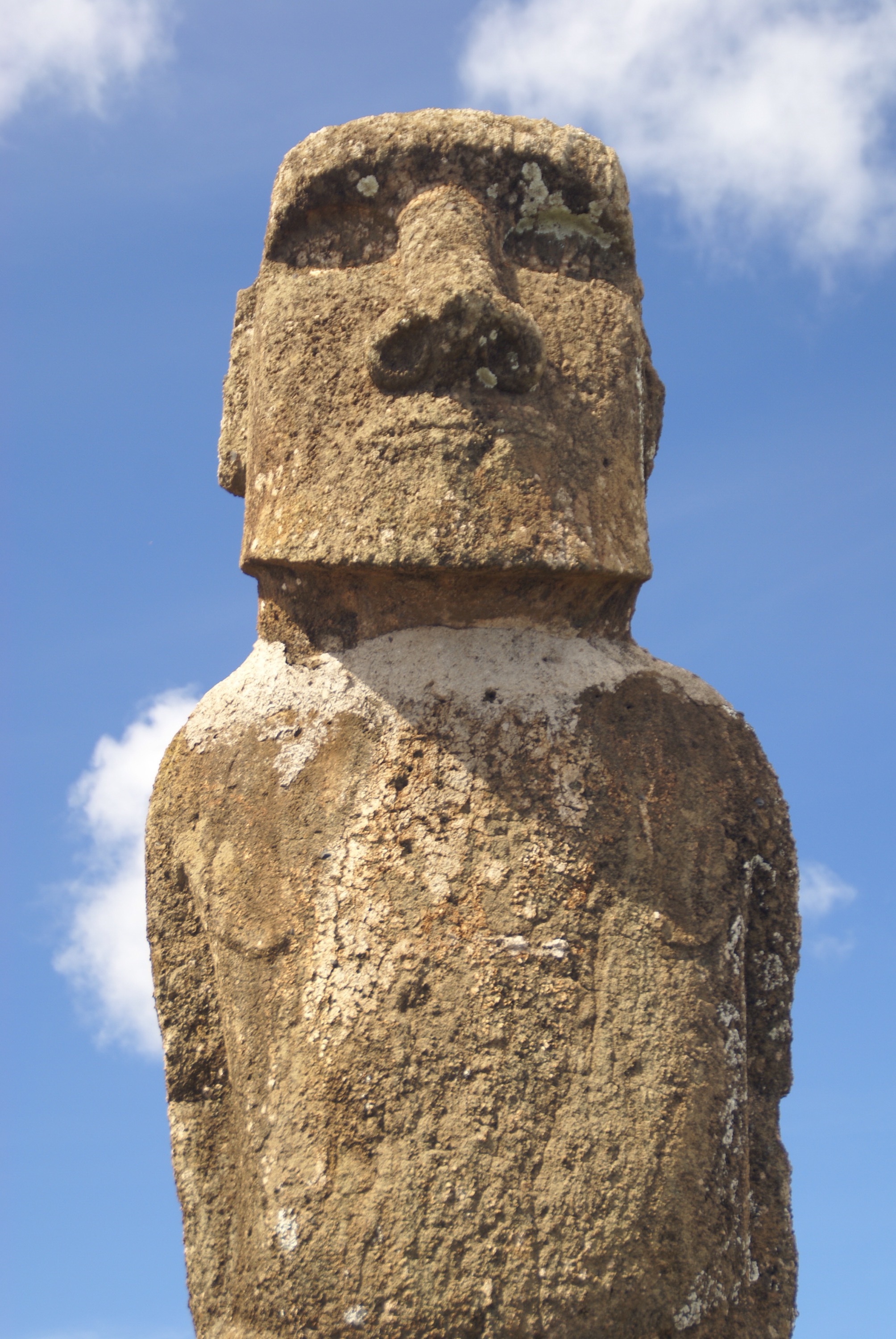
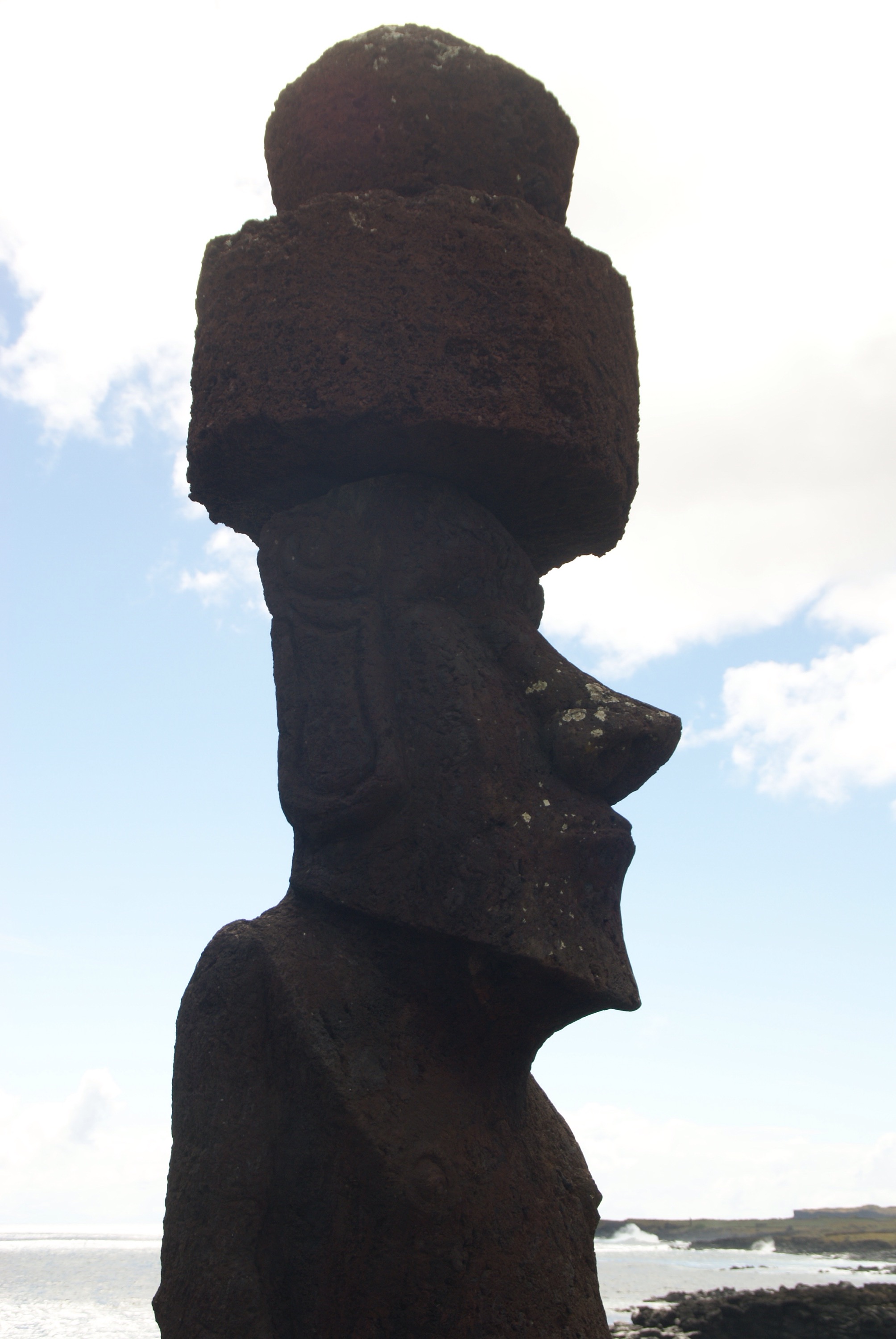
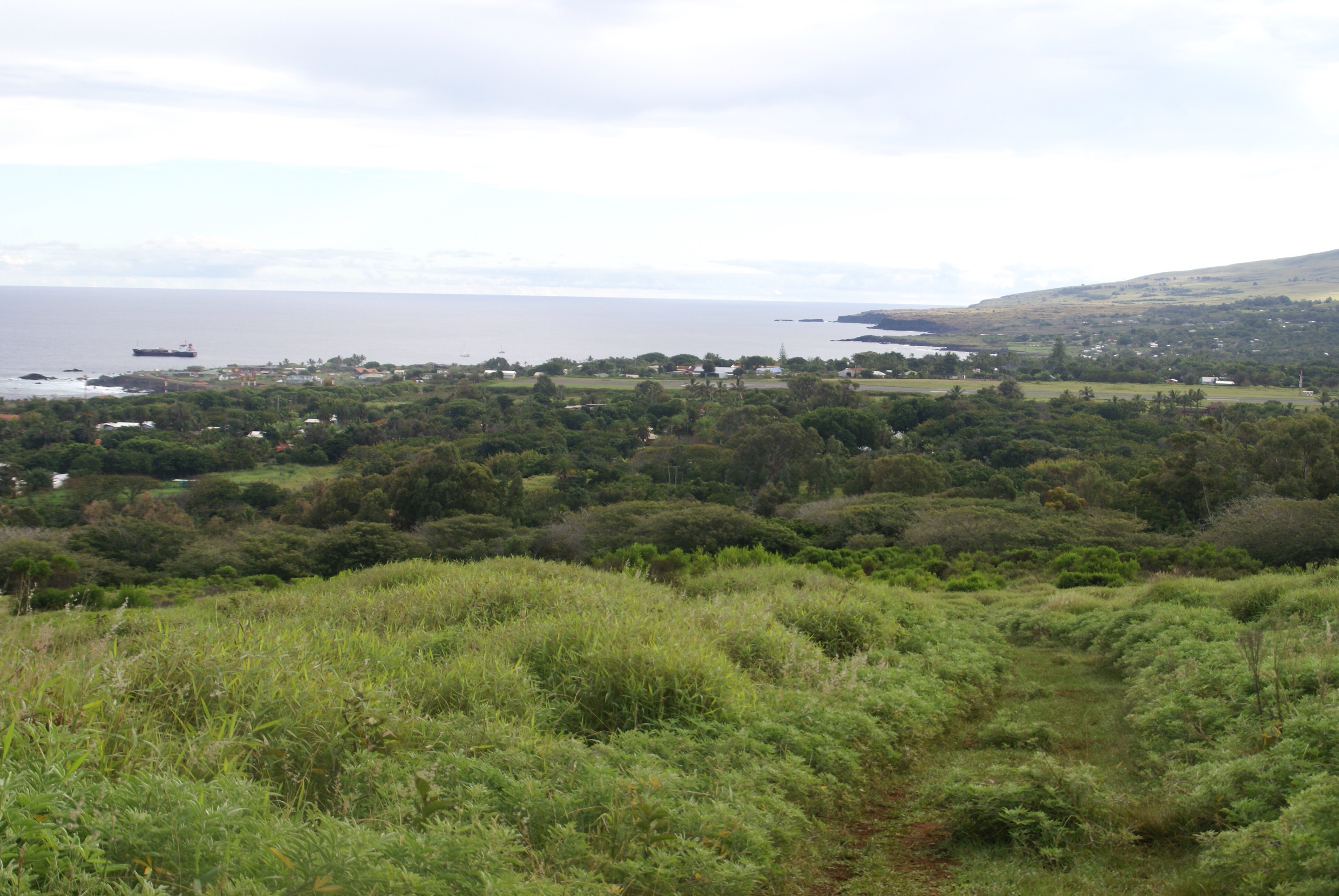
We spent our 6 days exploring the island by foot and car. At our cabana we were lent a copy of "A Companion to Easter Island" by James Grant-Peterkin which we found an excellent guide to what we were seeing. Steve said driving the tiny Suzuki Jimmy was like driving a toy car after nearly 2 years of only driving the truck. Of course what had drawn us to the island were the Moai (stone heads), there are about a 1000 scattered throughout the island. Built between 1000-1600AD they were carved to represent an ancestor and were placed inwards protectively looking over their village. The Moai were all carved from compacted volcanic ash, called tuff, found on the side of a volcano called Rano Raraku. There we saw so many Moai, some half carved, many complete and lots starting their journey to other parts of the island. It would have taken up to 2 years for a Moai to be carved using harder basalt stone tools to chip away the softer tuff. It really felt at the quarry that the workers had just downed tools one day and never returned.
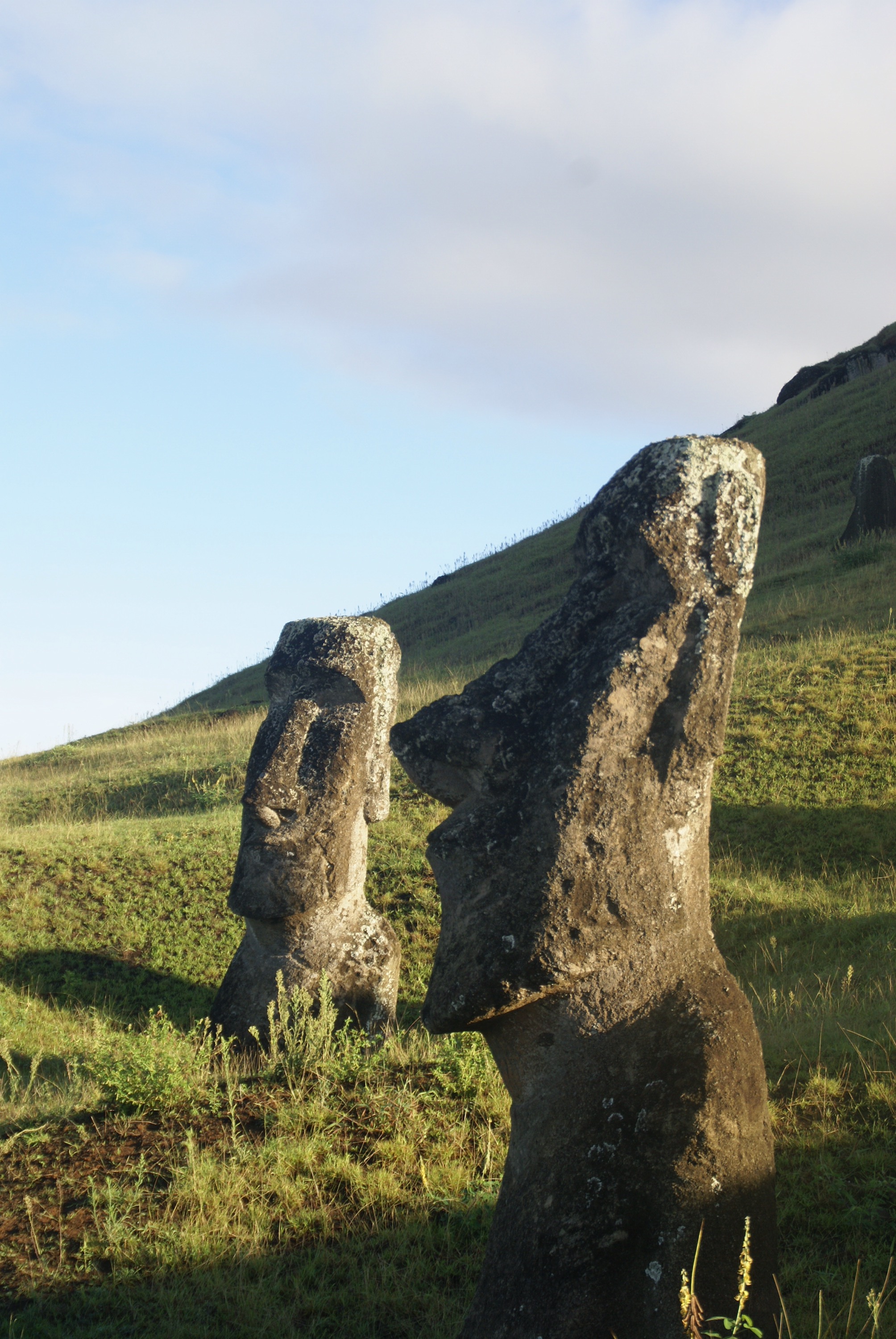
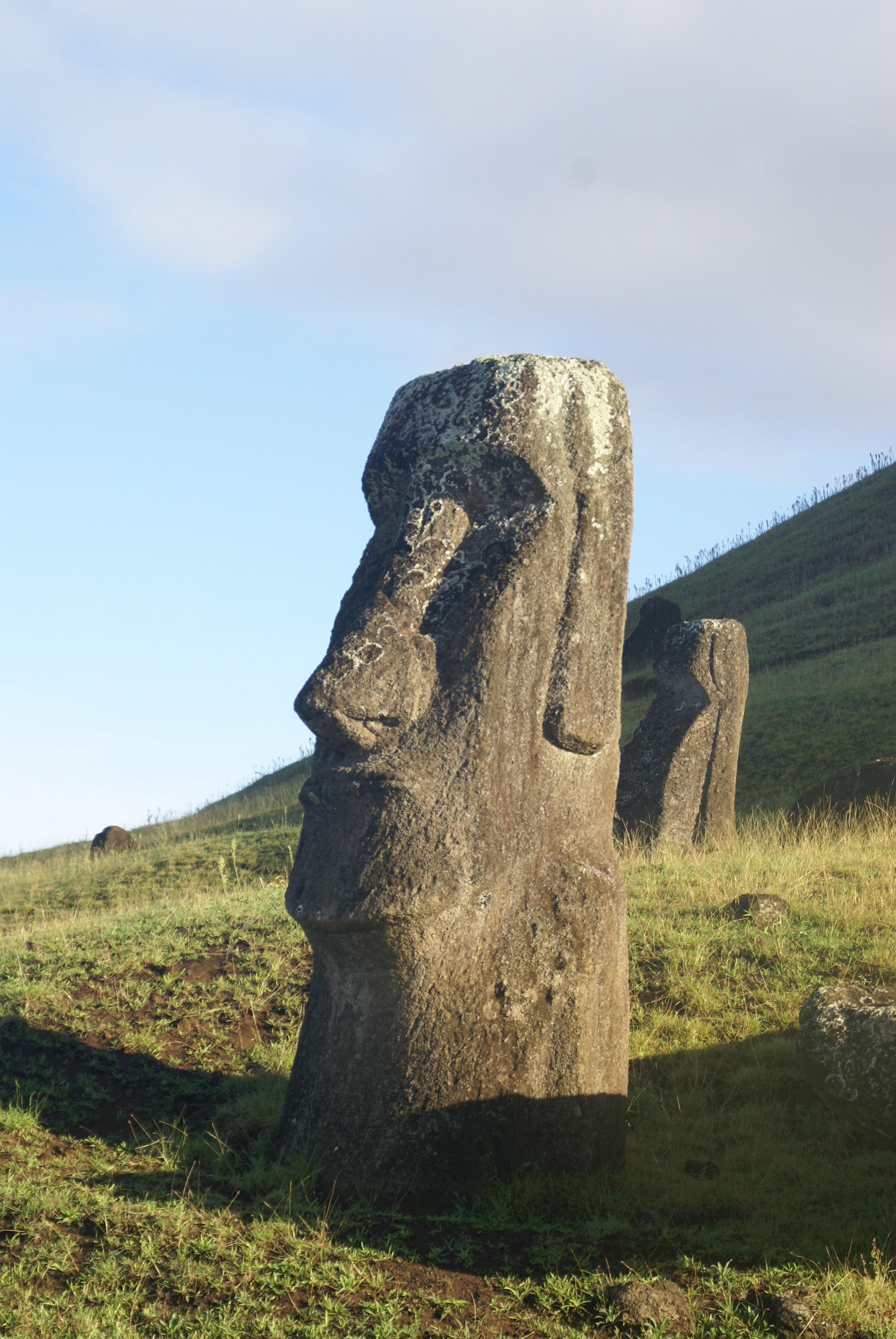
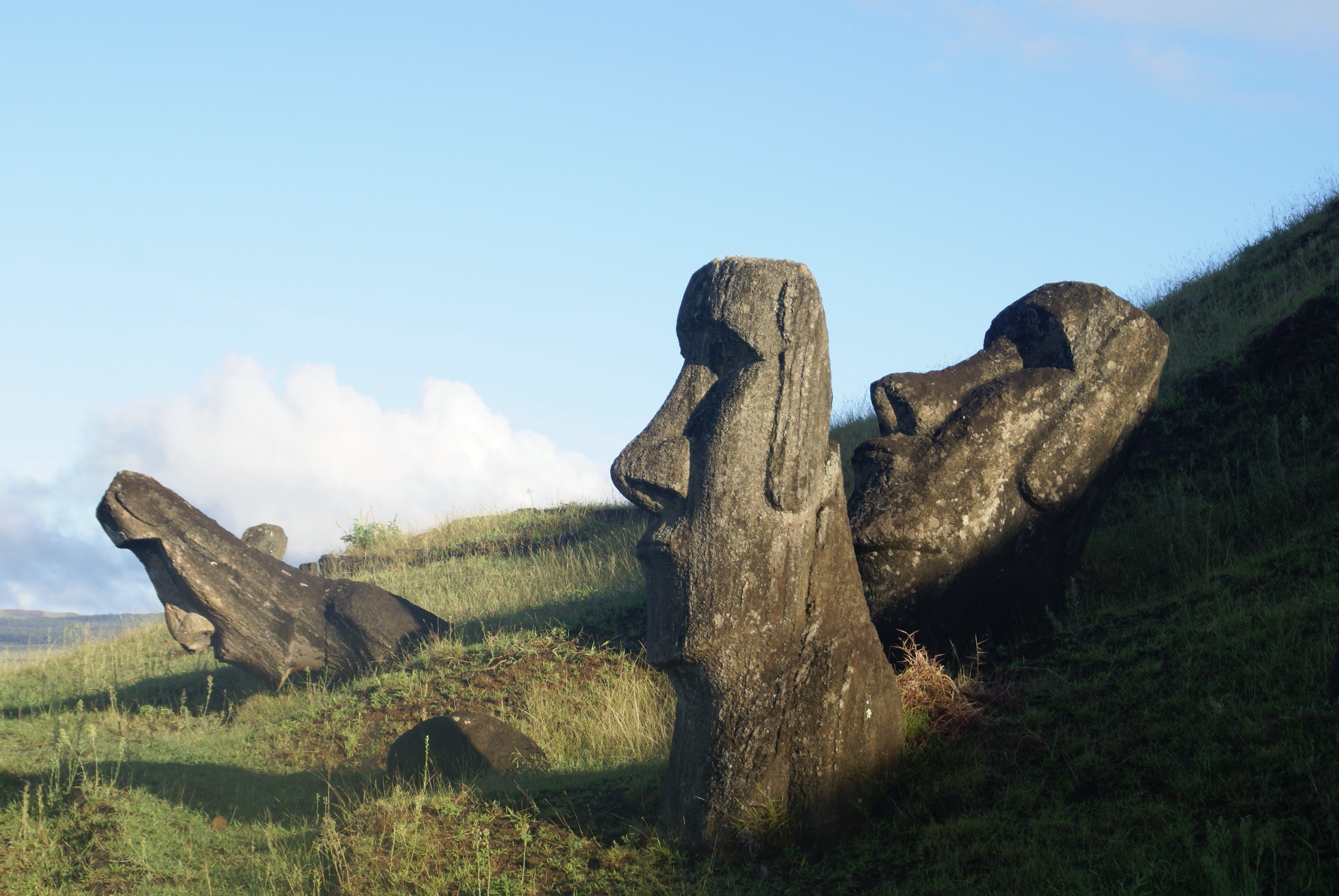
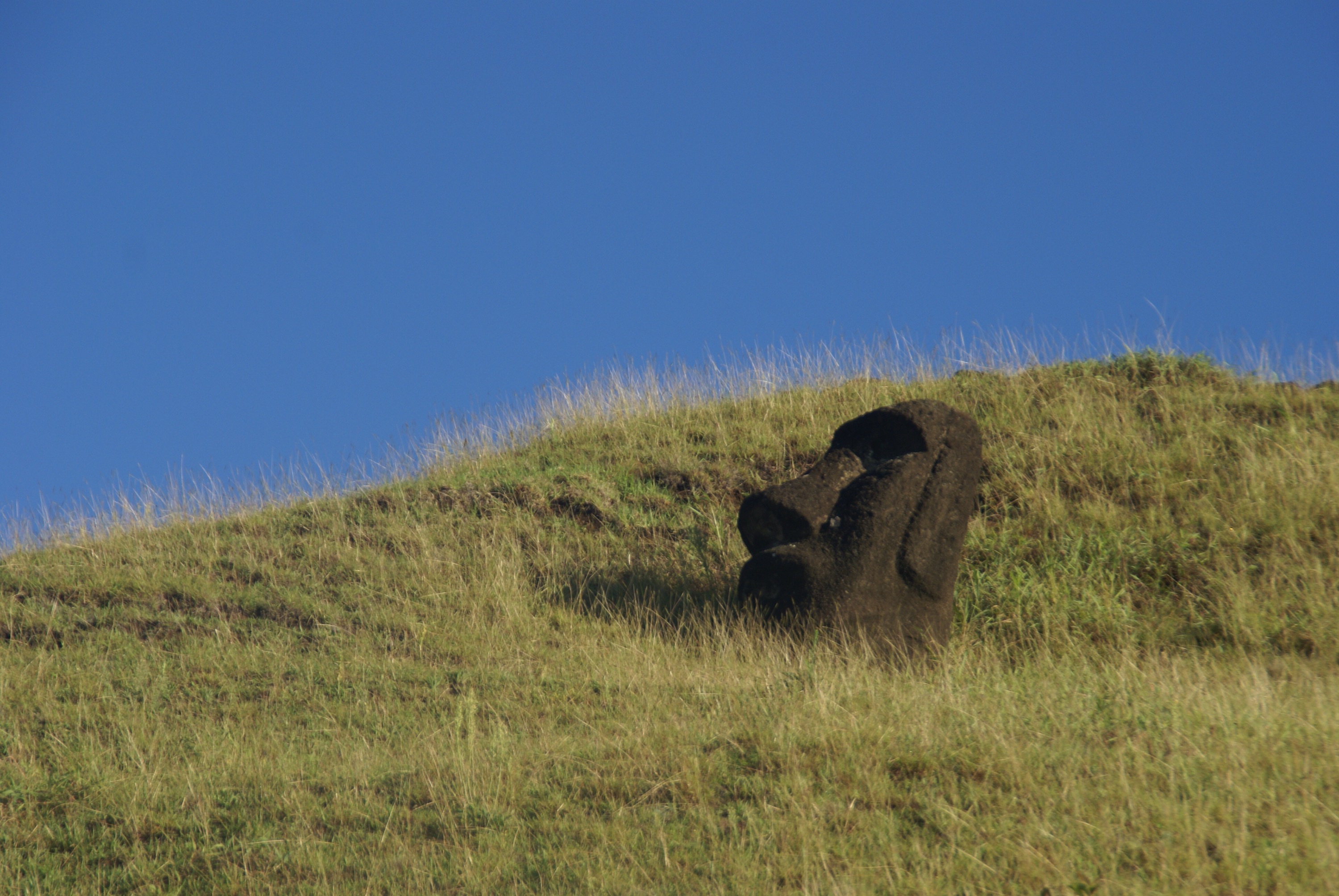

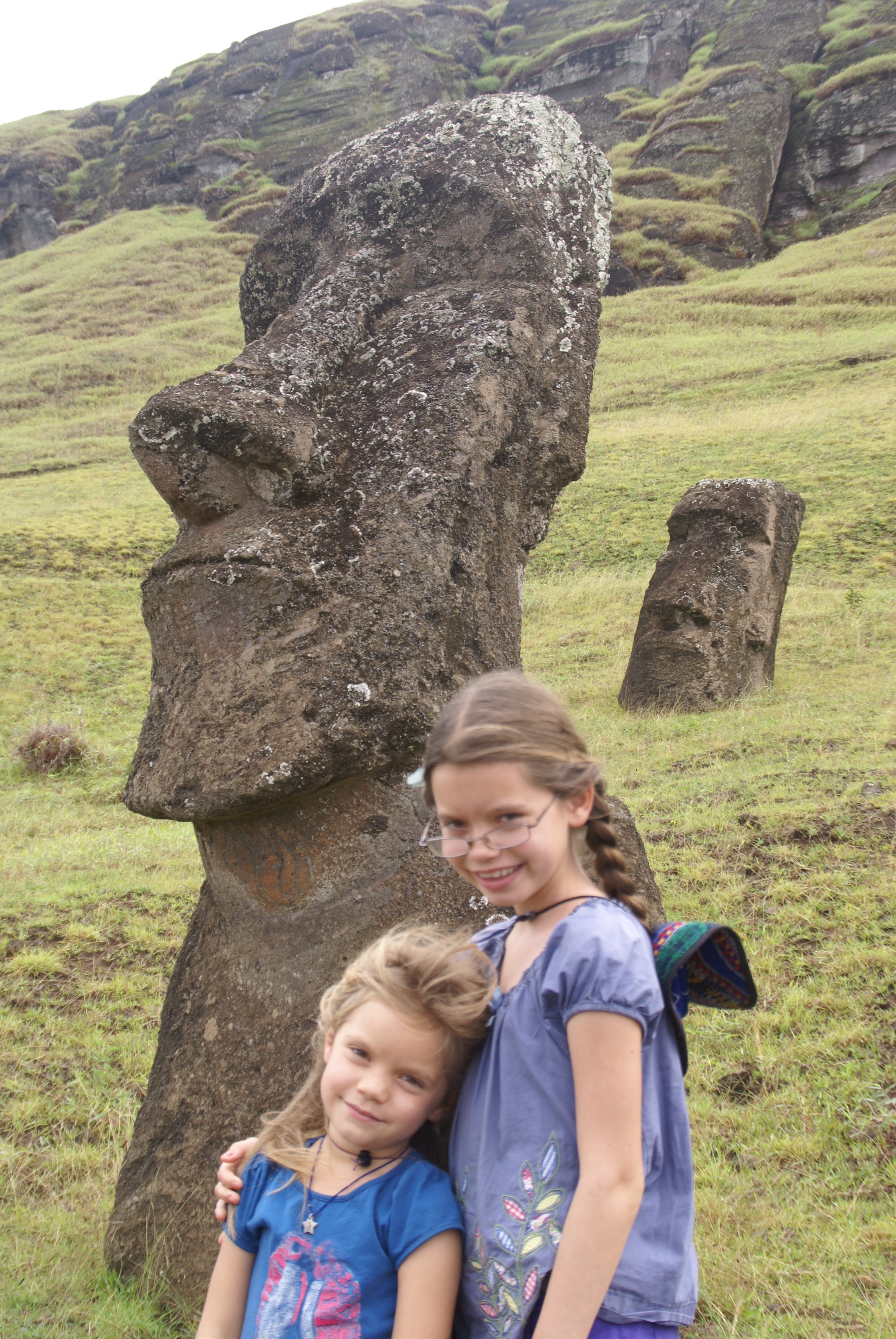
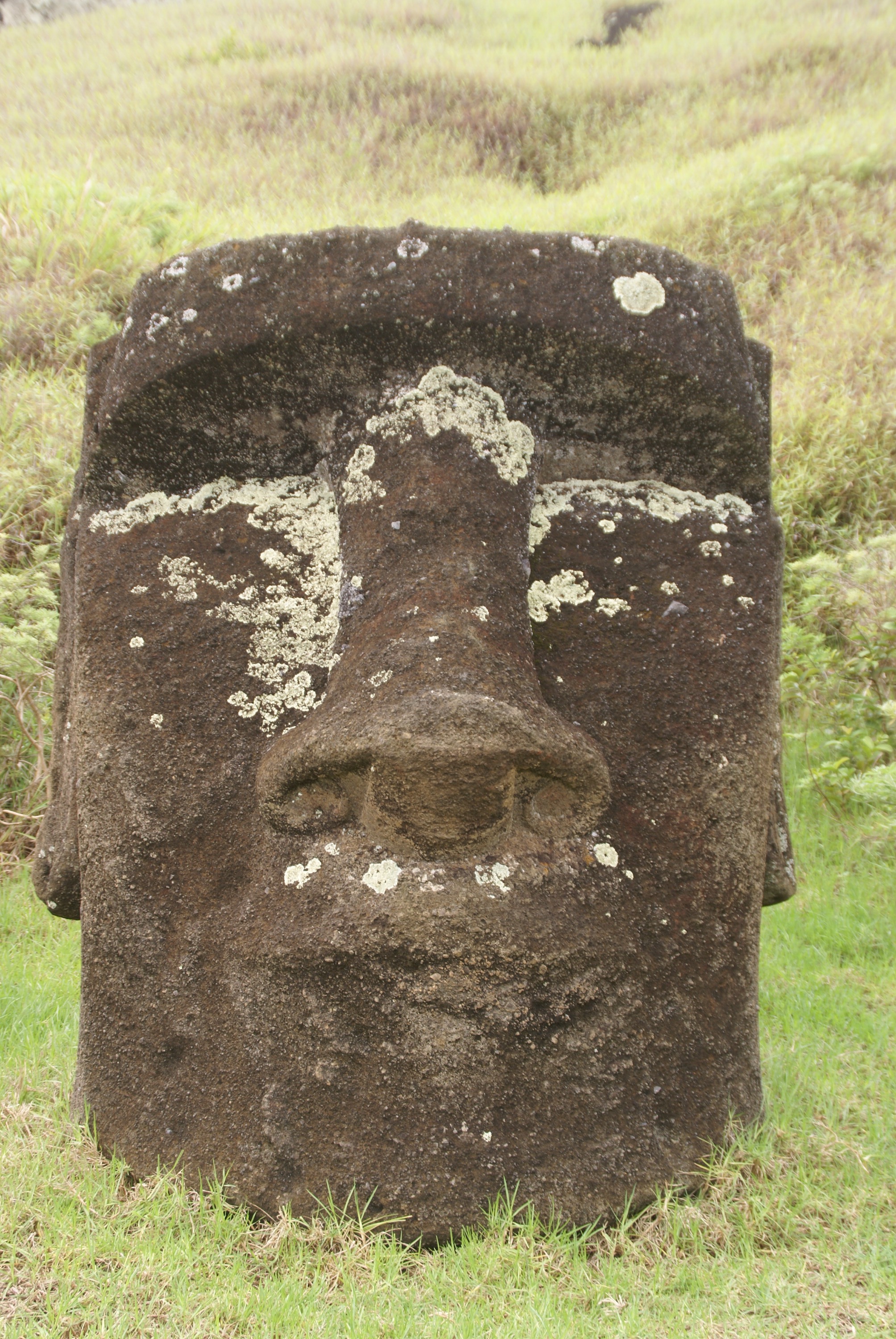
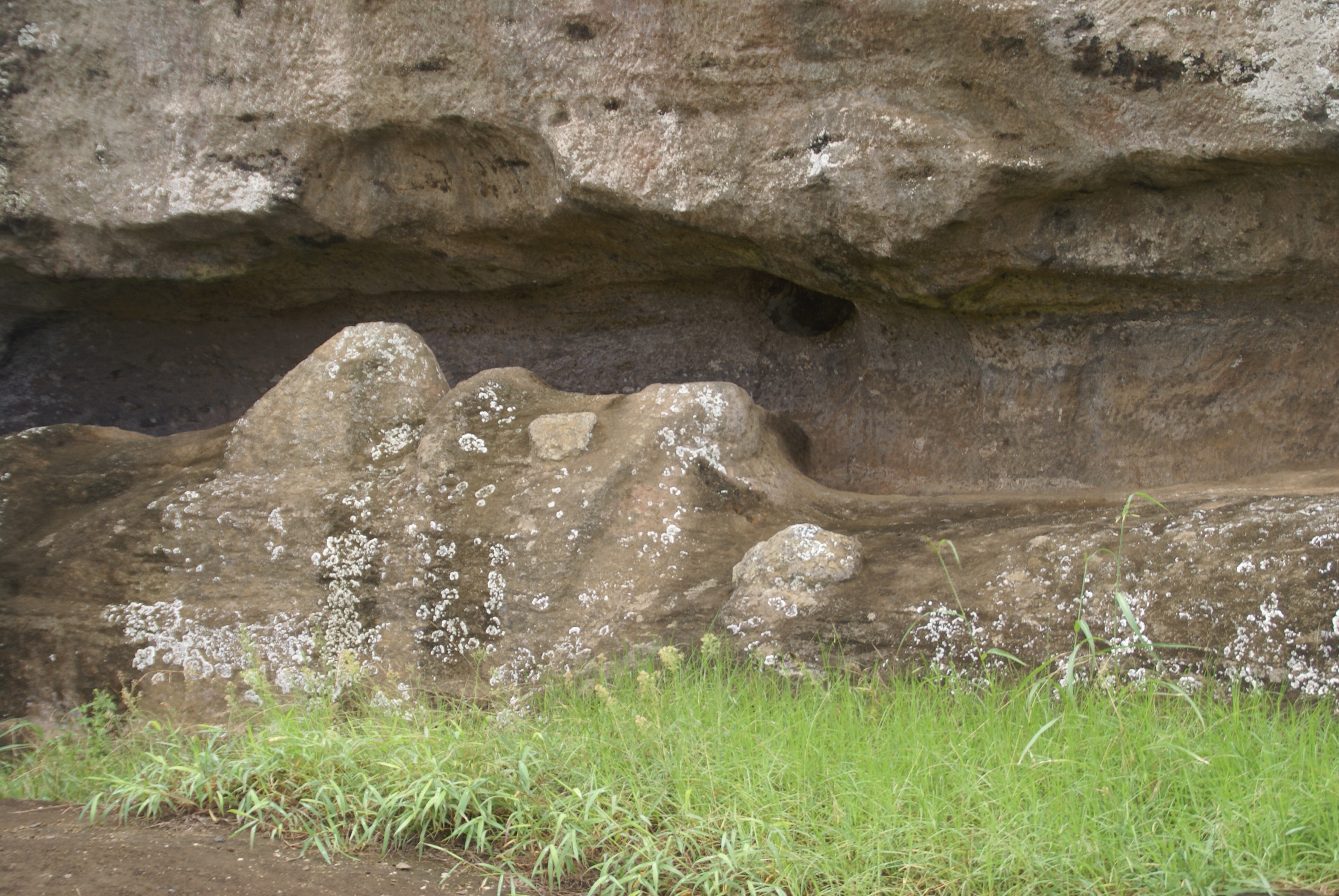
The Moai were usually carved horizontally before they chipped away underneath and carved the back.
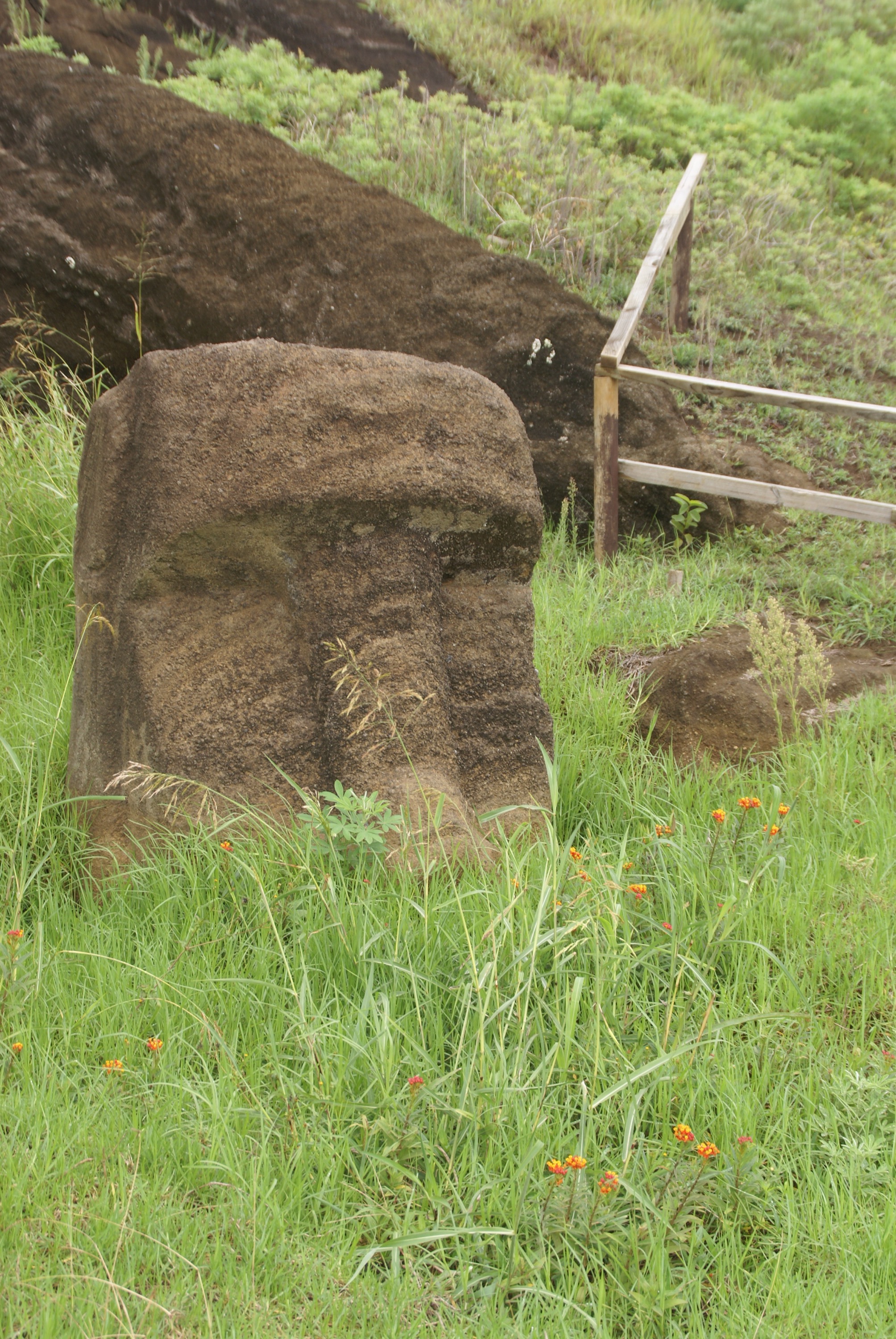
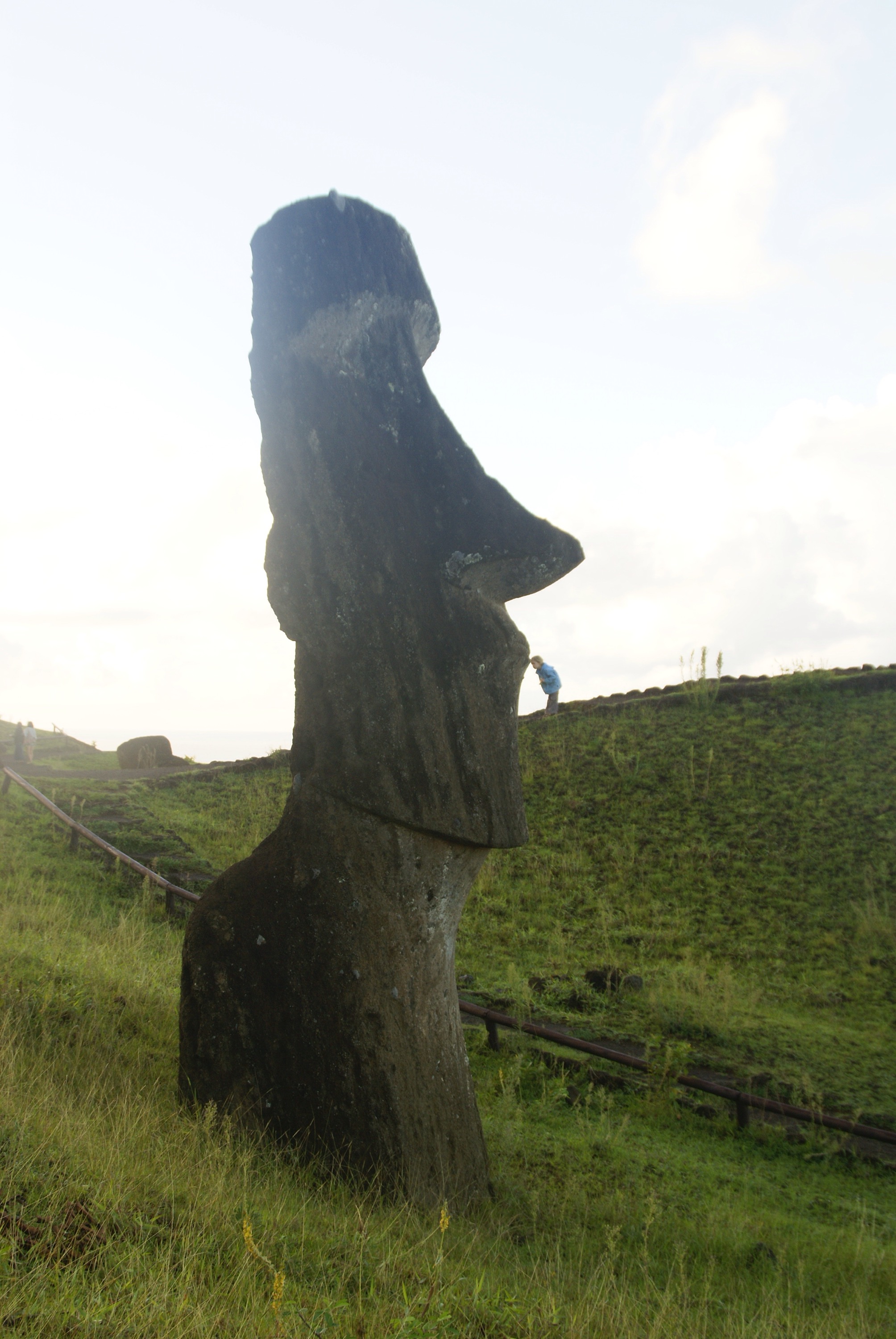
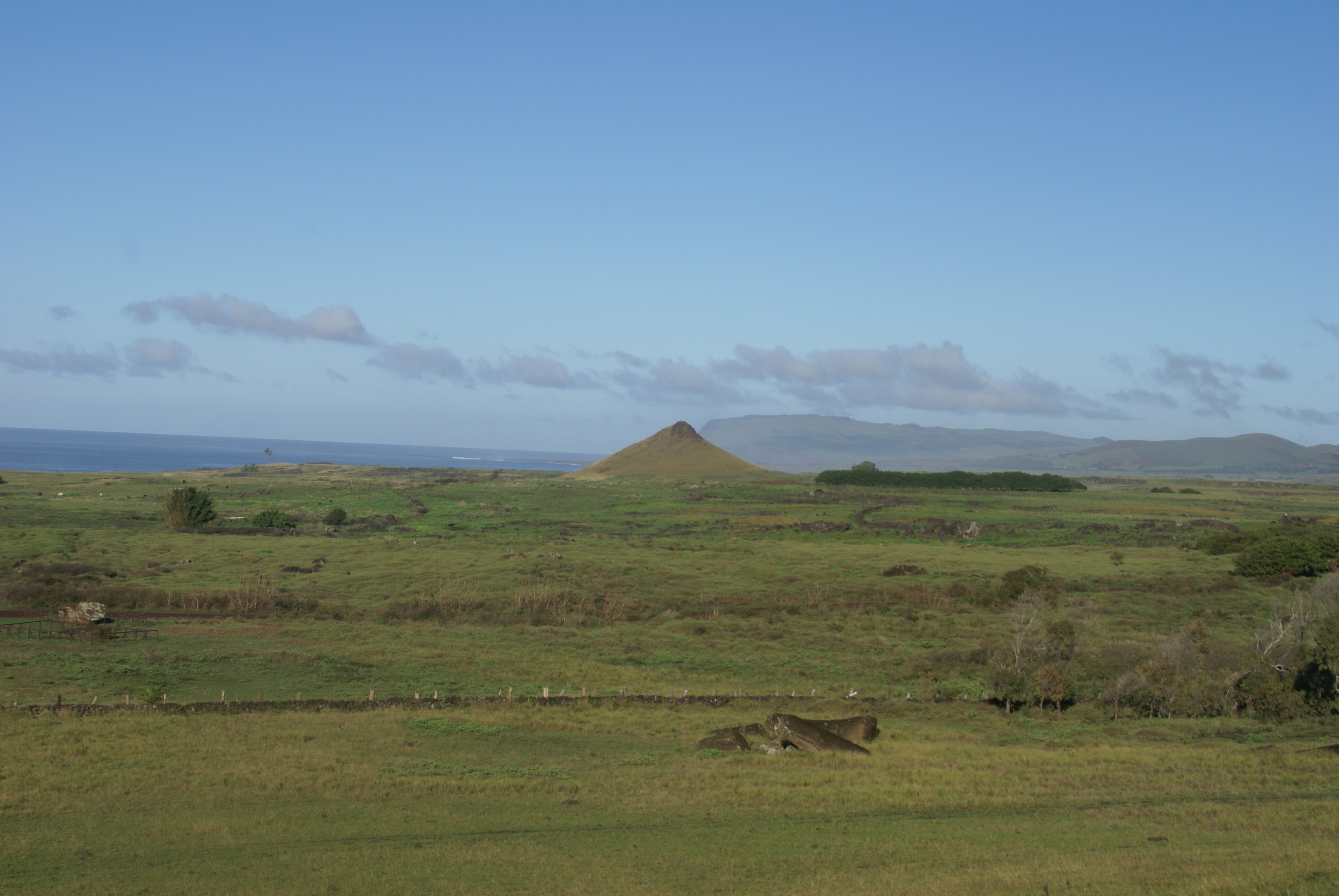
We had read up about the different theories of why the Rapa Nui people had almost been wiped out in the 19th century. There are so many conflicting ideas about the whole island's history. It looks most likely that the people came from the Polynesian island sometime between 600-900AD, and formed a successful society on what was then a lush, forested island. One theory was that the people's obsession with creating Moai (stone heads) had lead to mass deforestation causing erosion, poor crop growth, then starvation and tribal warfare. But other theories are that it was the European arrival in 1722 and onwards that caused the most problems bringing disquiet and disease. Although the first explorer was only inland for a day, the second expedition was 50 years later and then another 4 years later. It was around that time that things got really bad for the islanders and there was inter-tribal warfare caused by a lack of natural resources. At this point all the Moai were toppled, the ones now standing have been put back up recently. A huge slave raid and disease decimated the population in the 1860's reducing the population to just 111. The population slowly increased but had a hard time as the Chileans gave control of the island to a private sheep company who confined the people to Hanga Roa. It wasn't till the 1960's that things improved and the Rapa Nui were given full Chilean citizenship. Now there is a strong cultural identity and calls for increased autonomy. In fact an ongoing dispute with the Chilean Government meant that the park fees are no longer being collected and we had to sign in at checkpoints manned by local people. However, the Chilean government has recently invested a lot of money in the island, so I think there are mixed feelings.
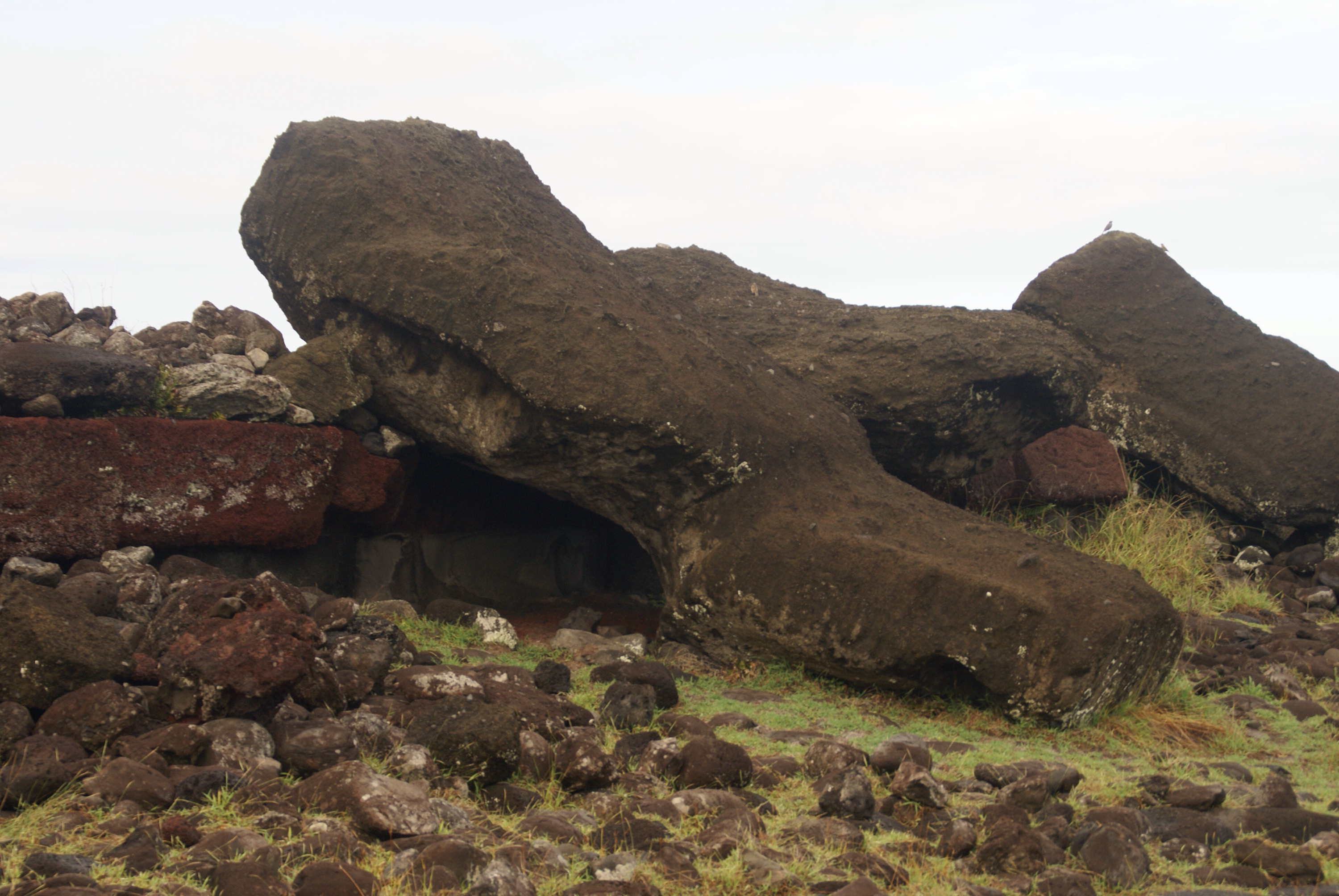
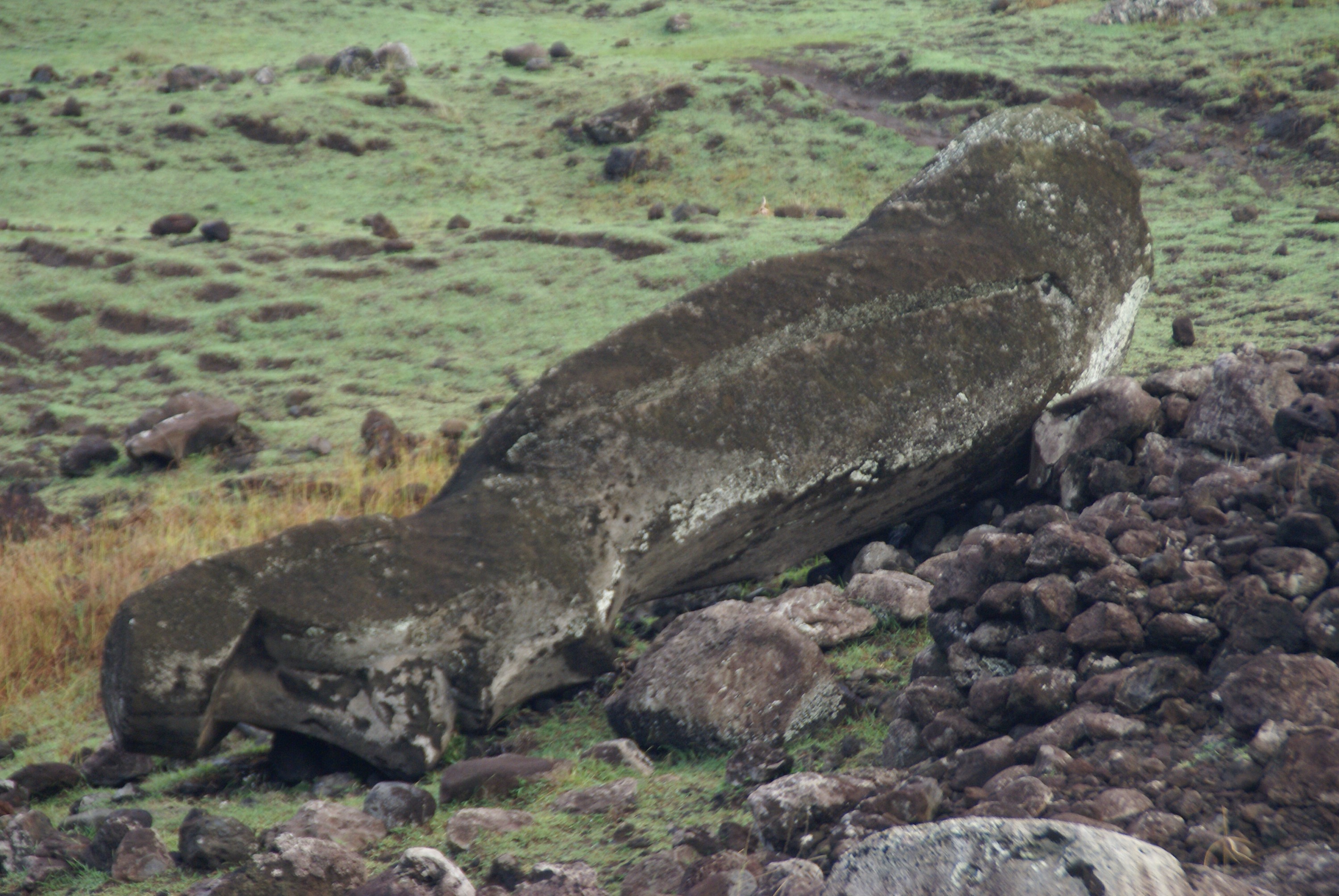 Toppled moai
Toppled moai
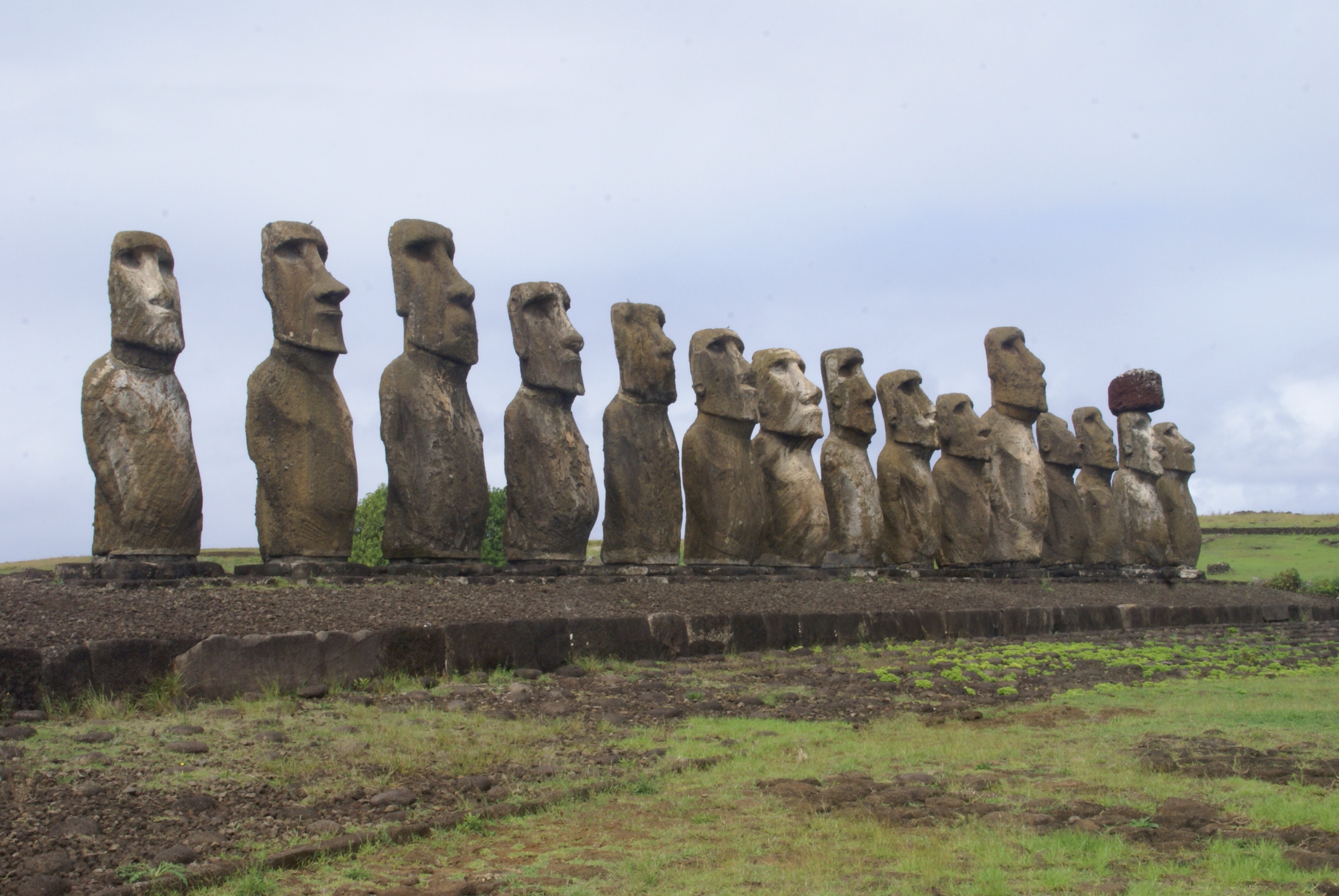
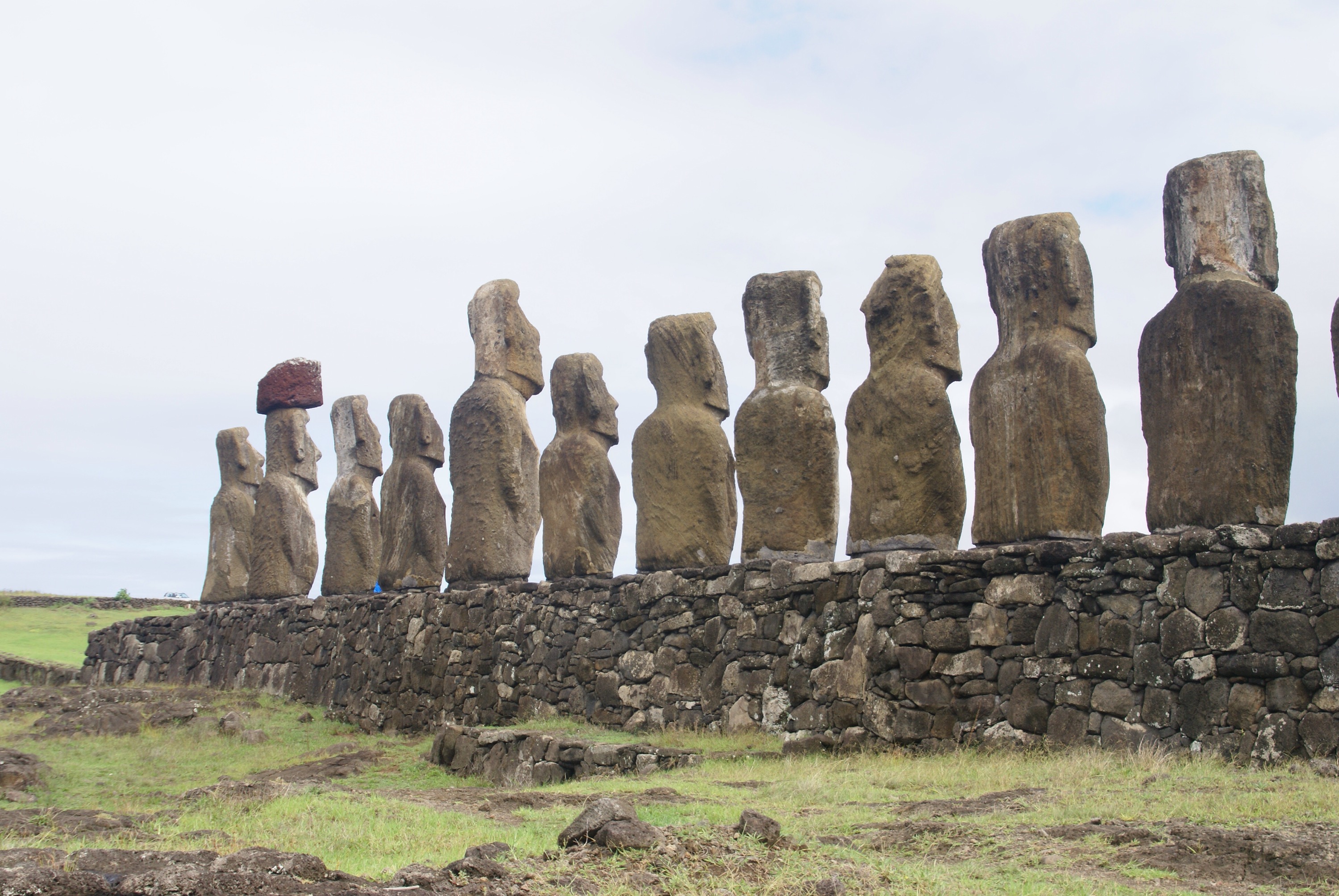
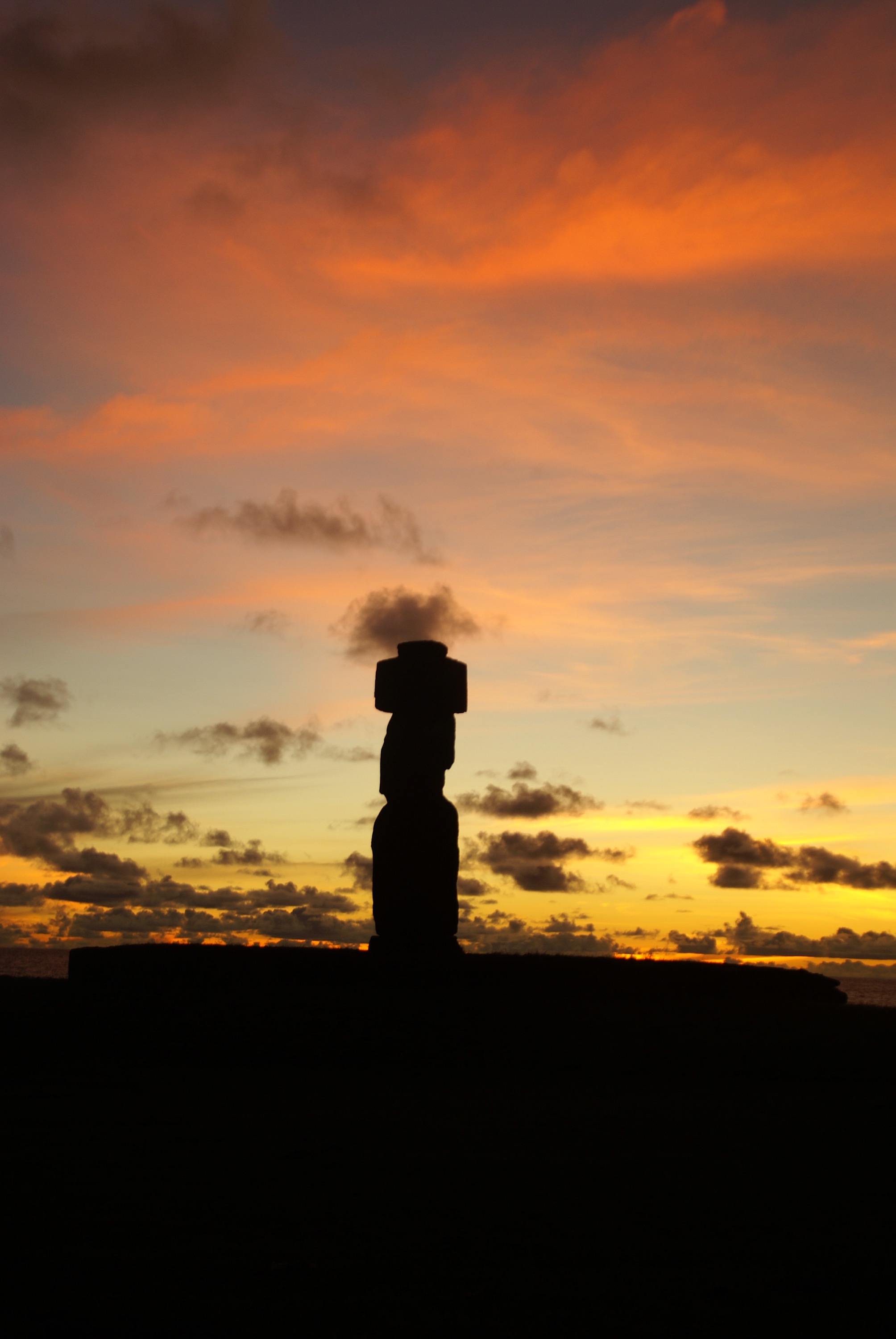
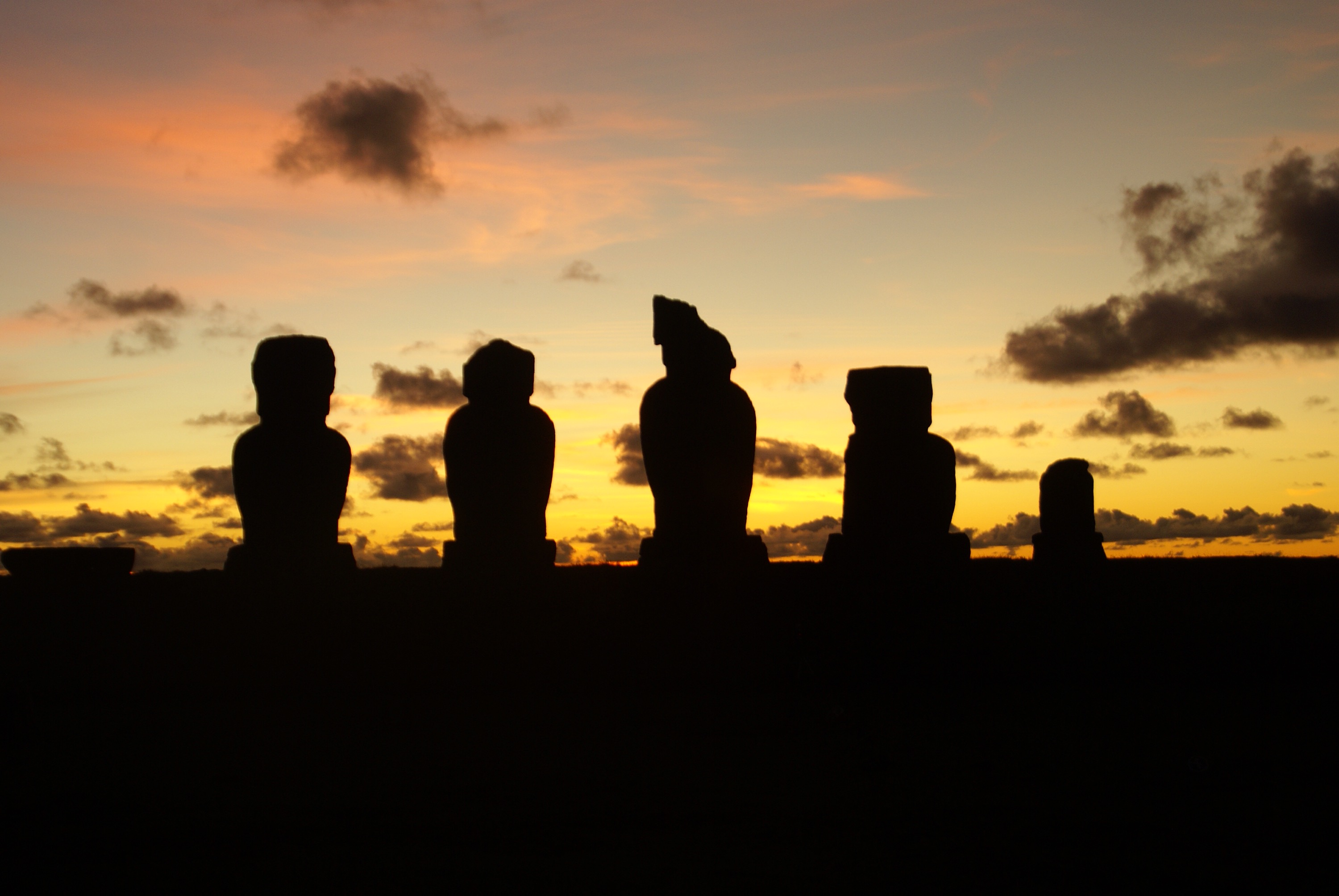
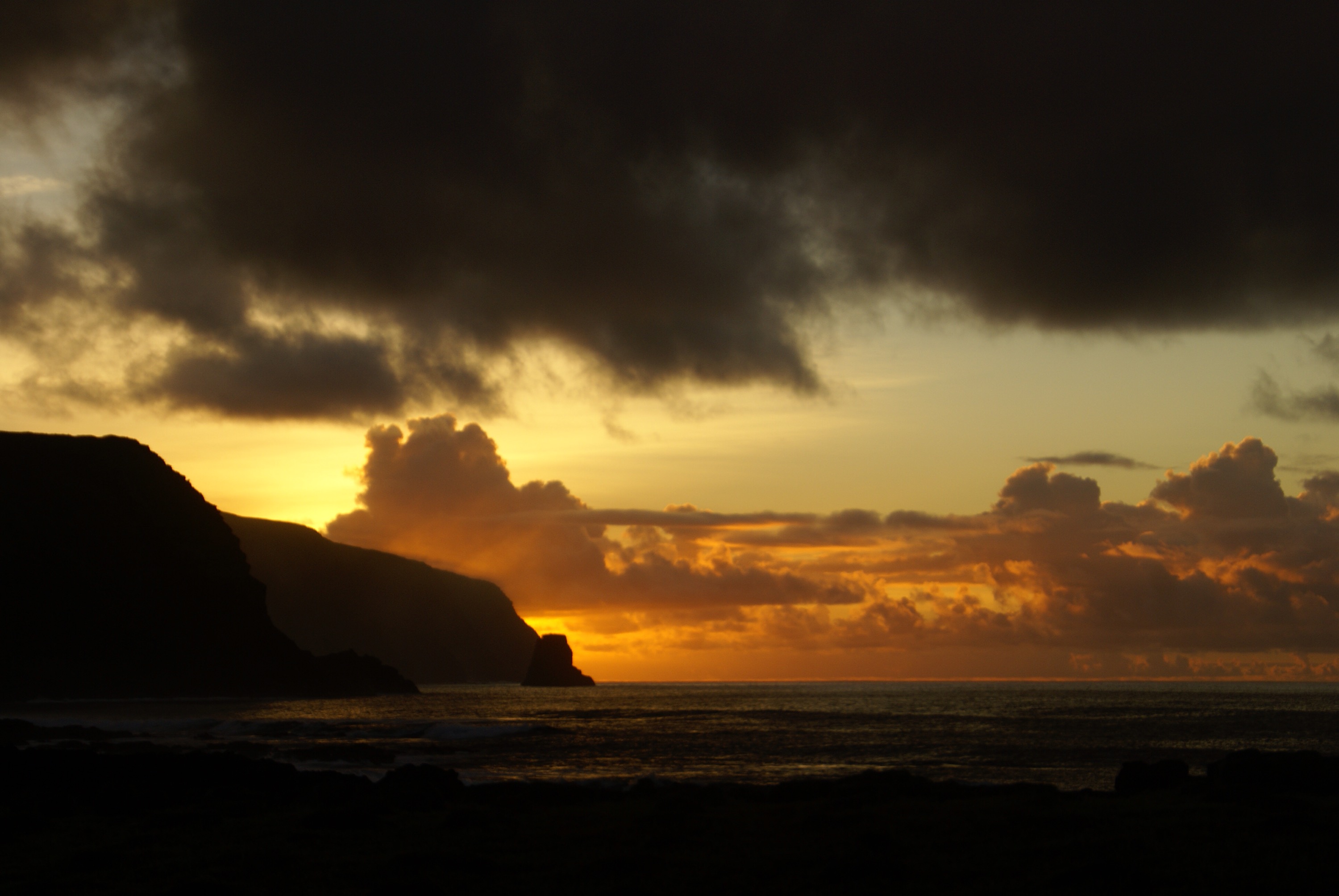
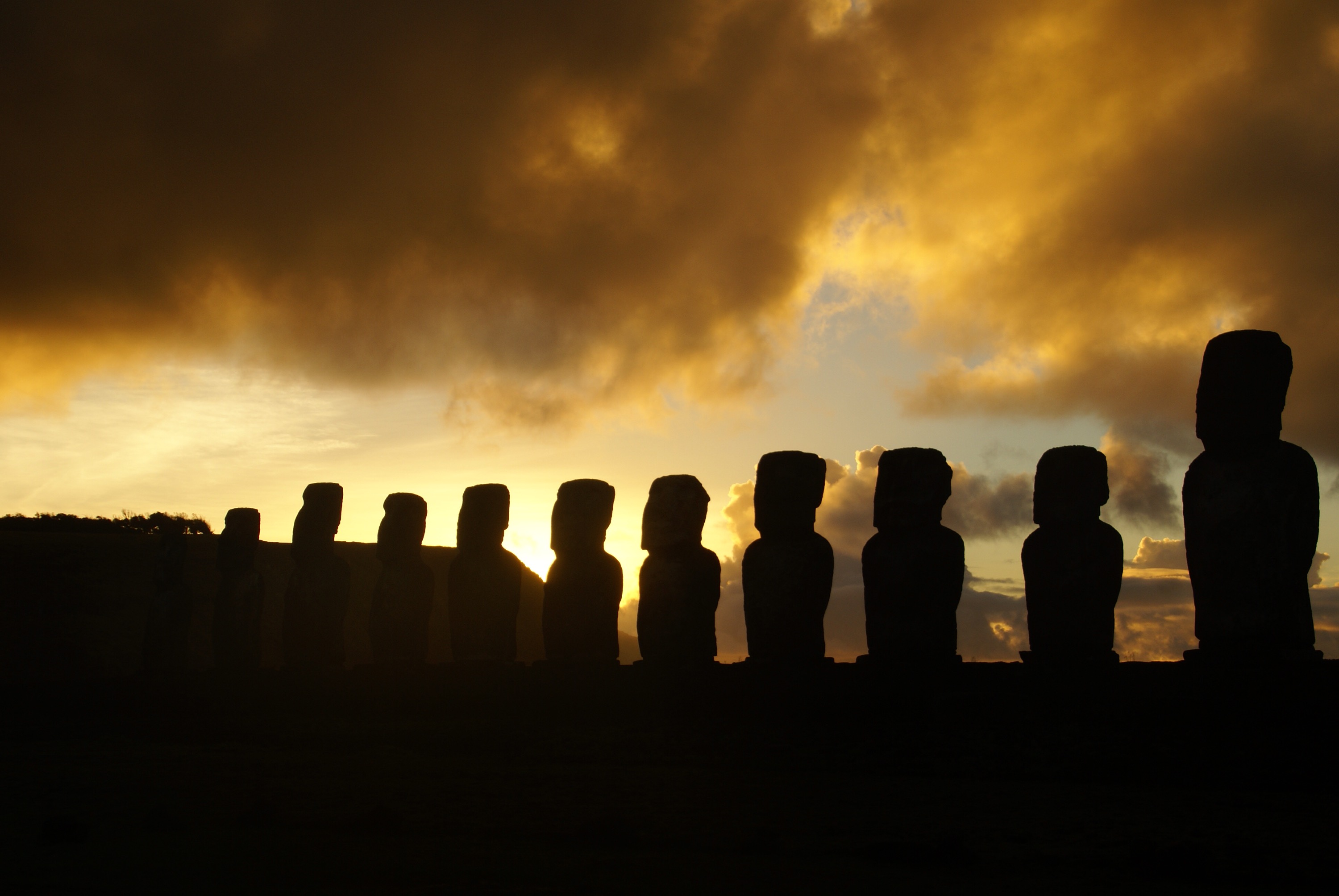
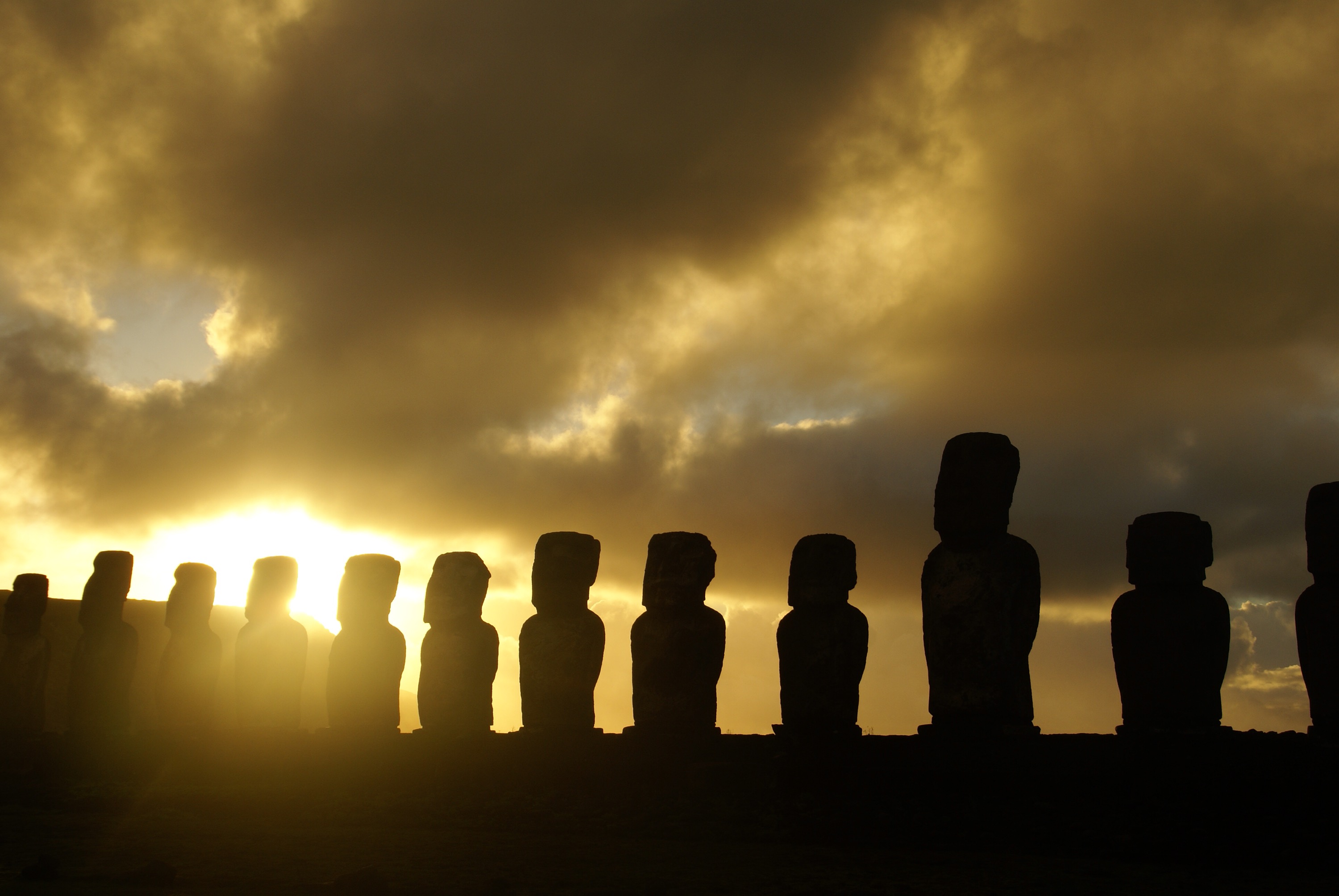
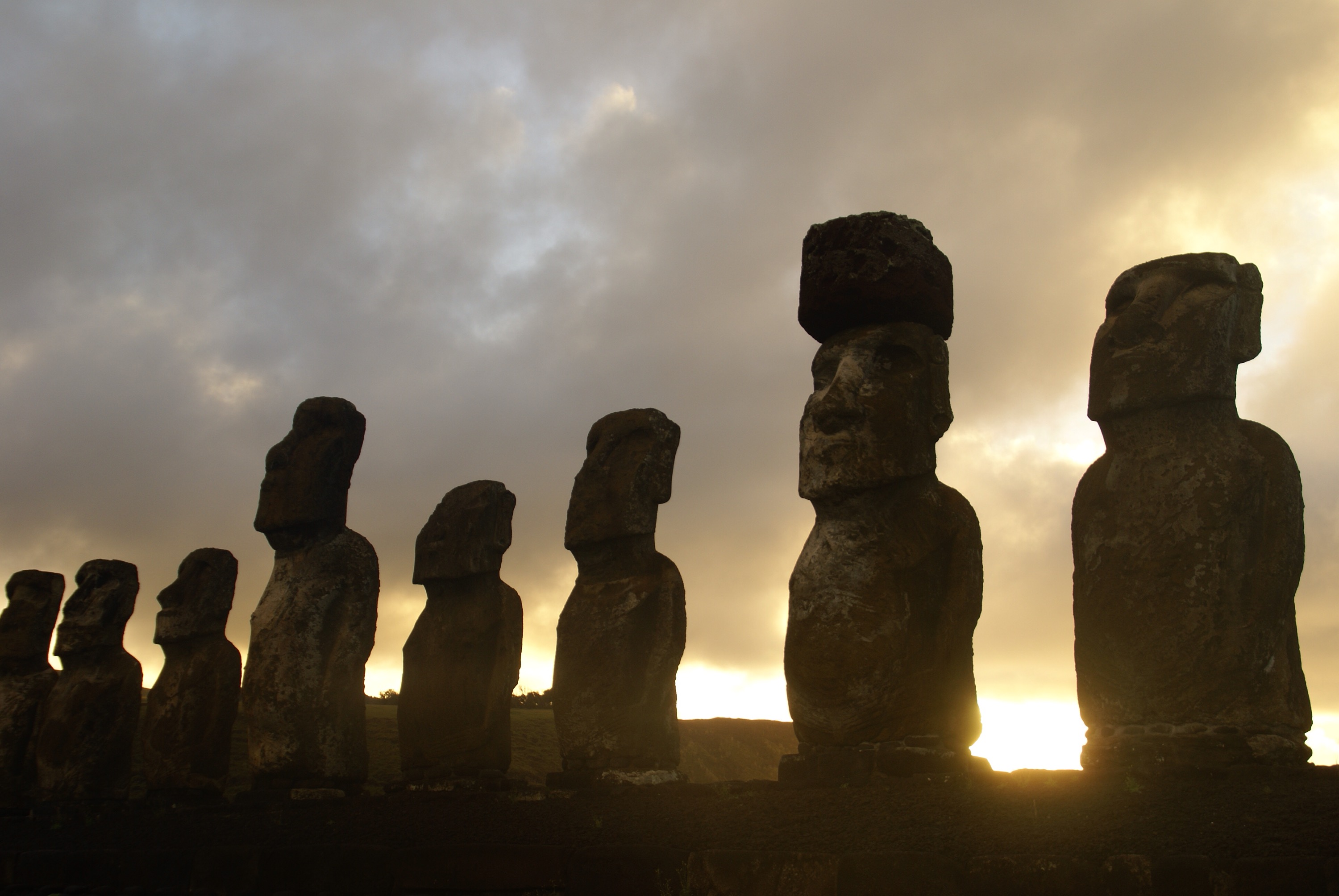
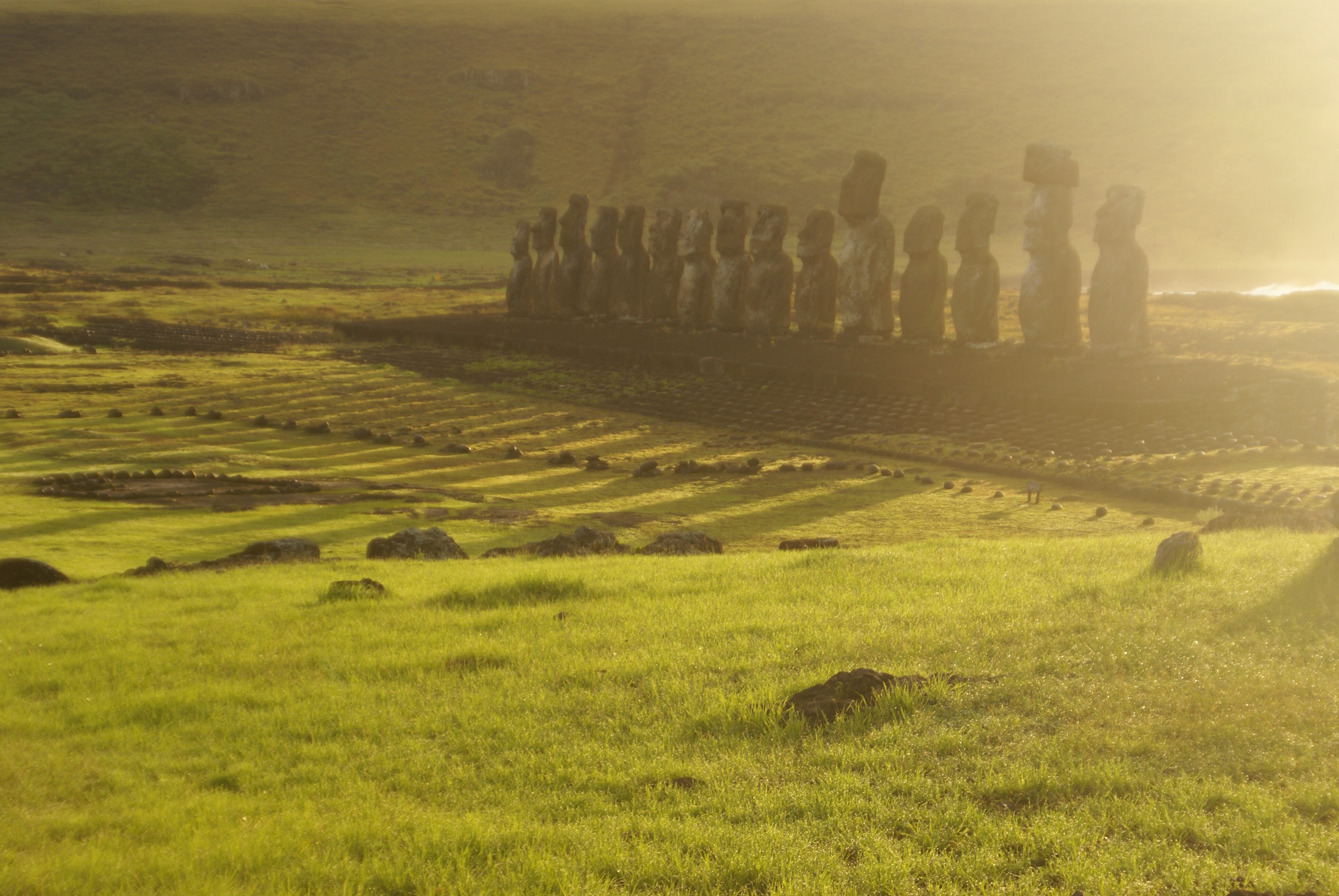
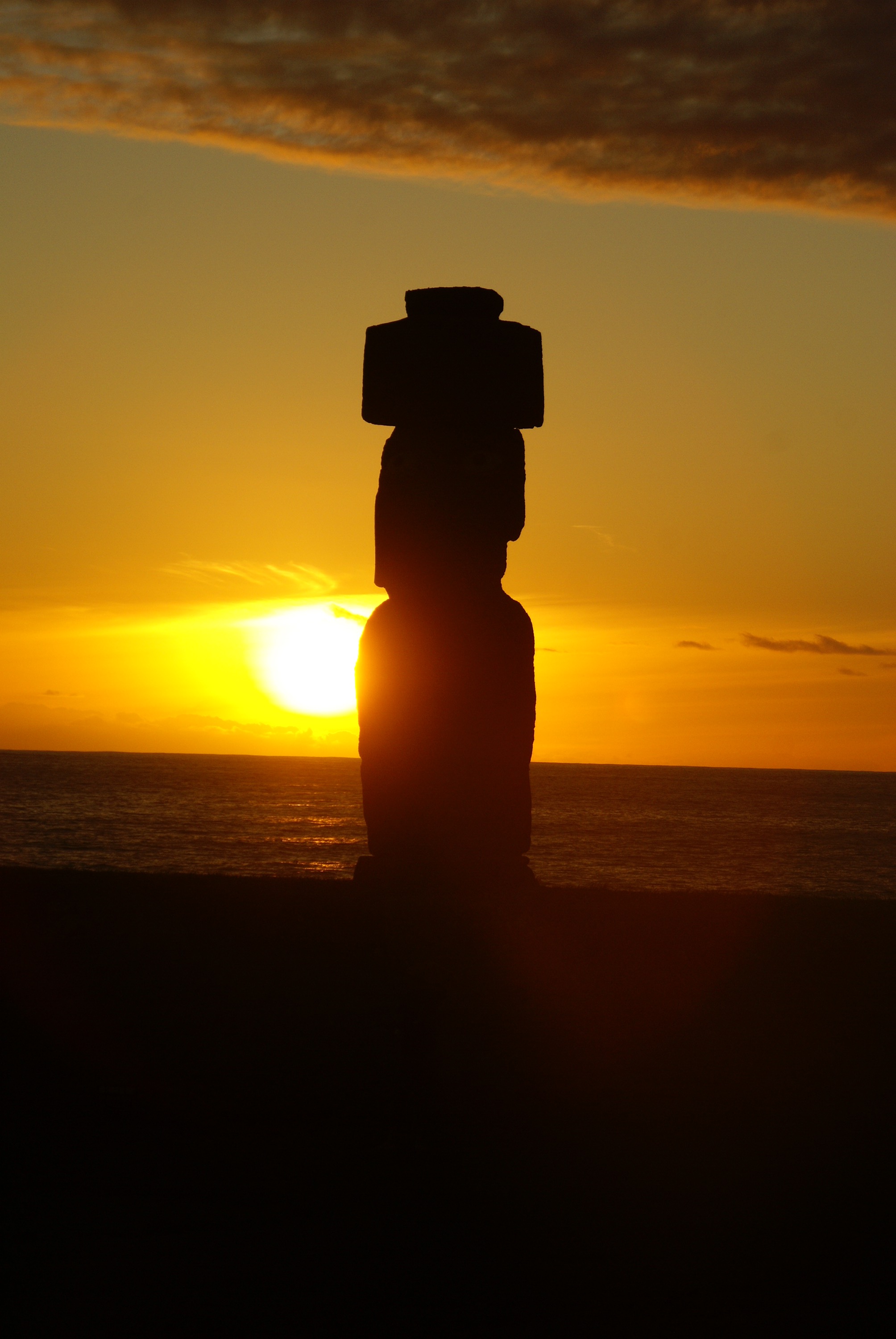
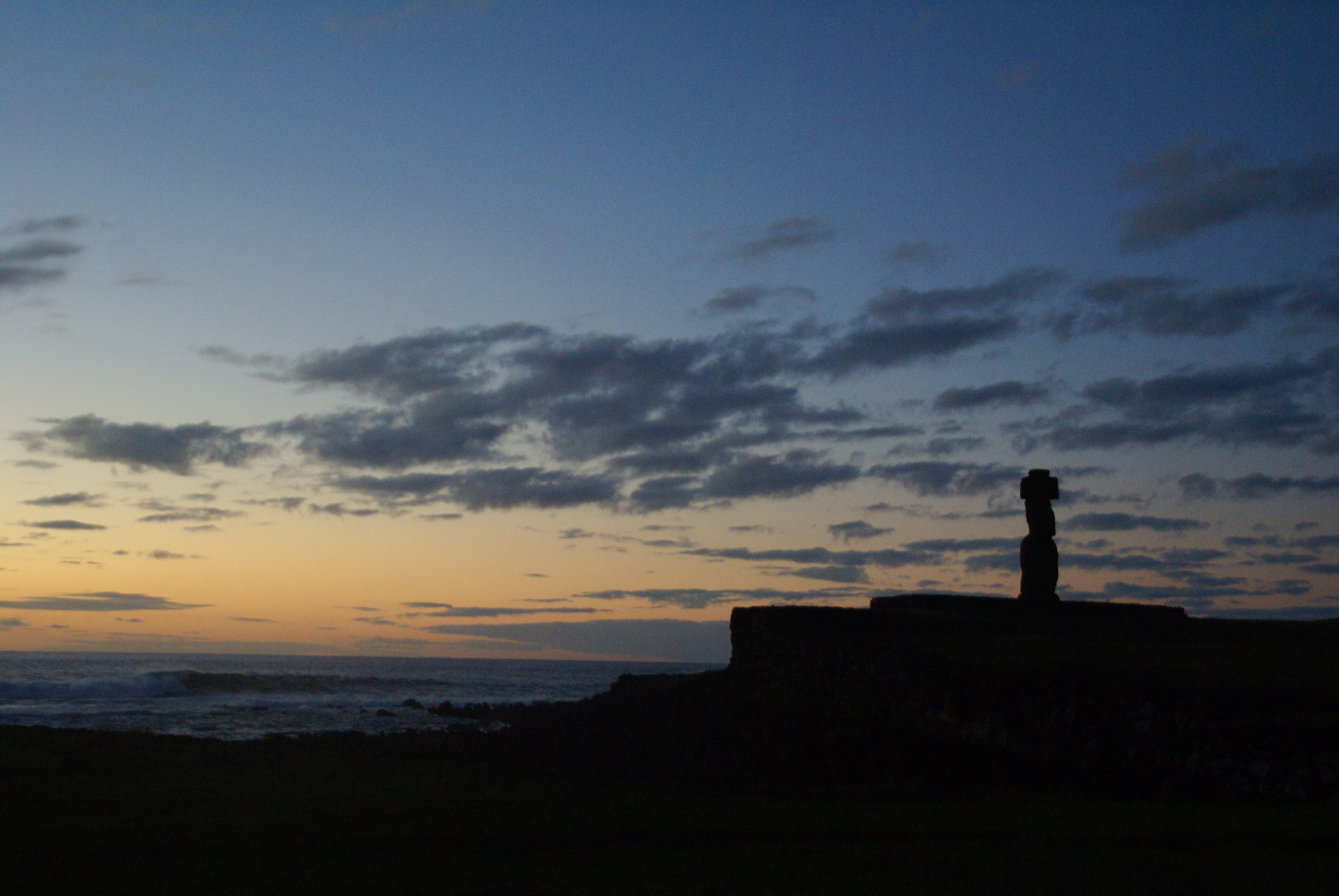
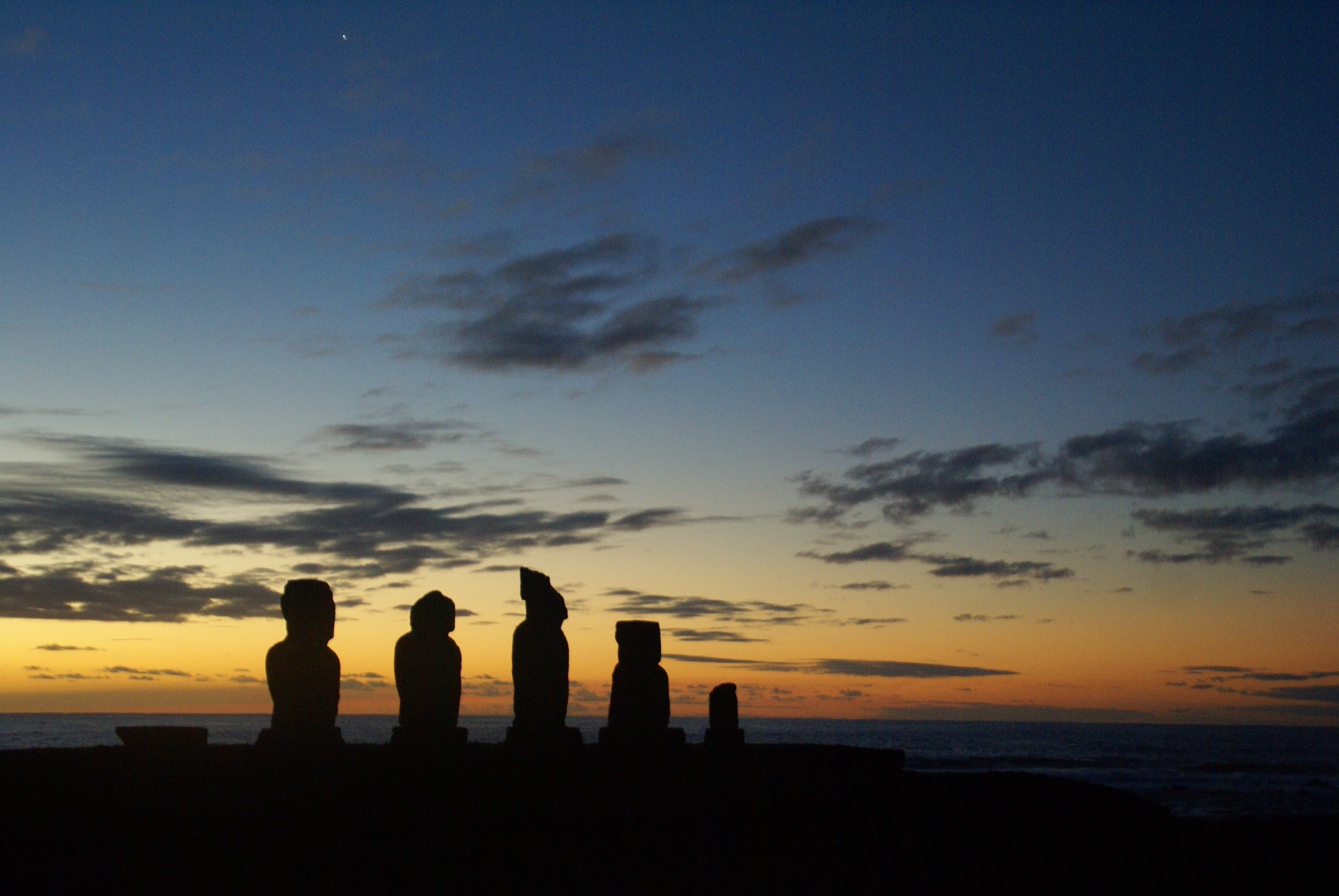
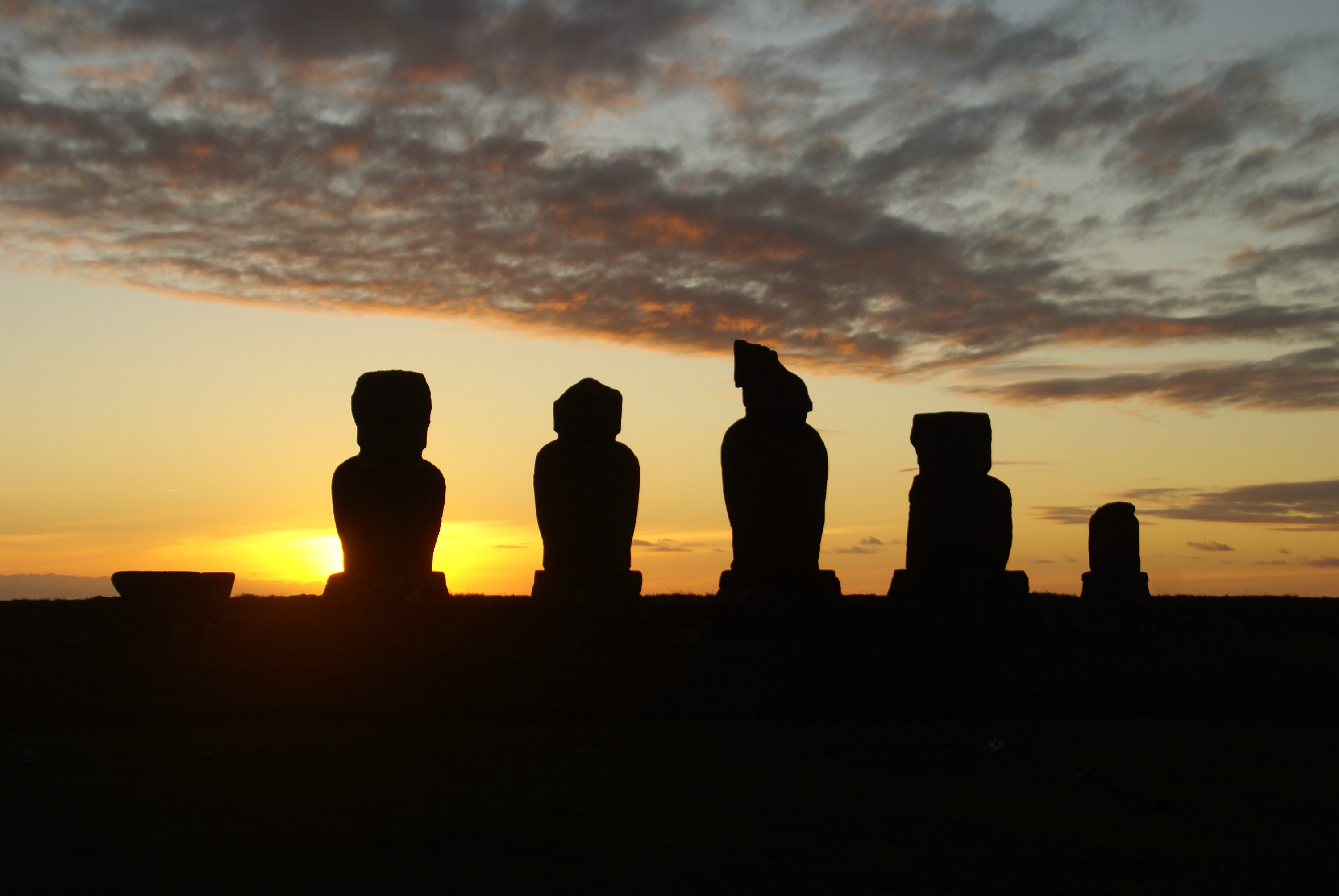
The only beach at Anakena, would not look out of place on any Polynesian island with its beautiful golden sand. But the row of 6 Moai, 3 with red topknots behind it made it a very special place.
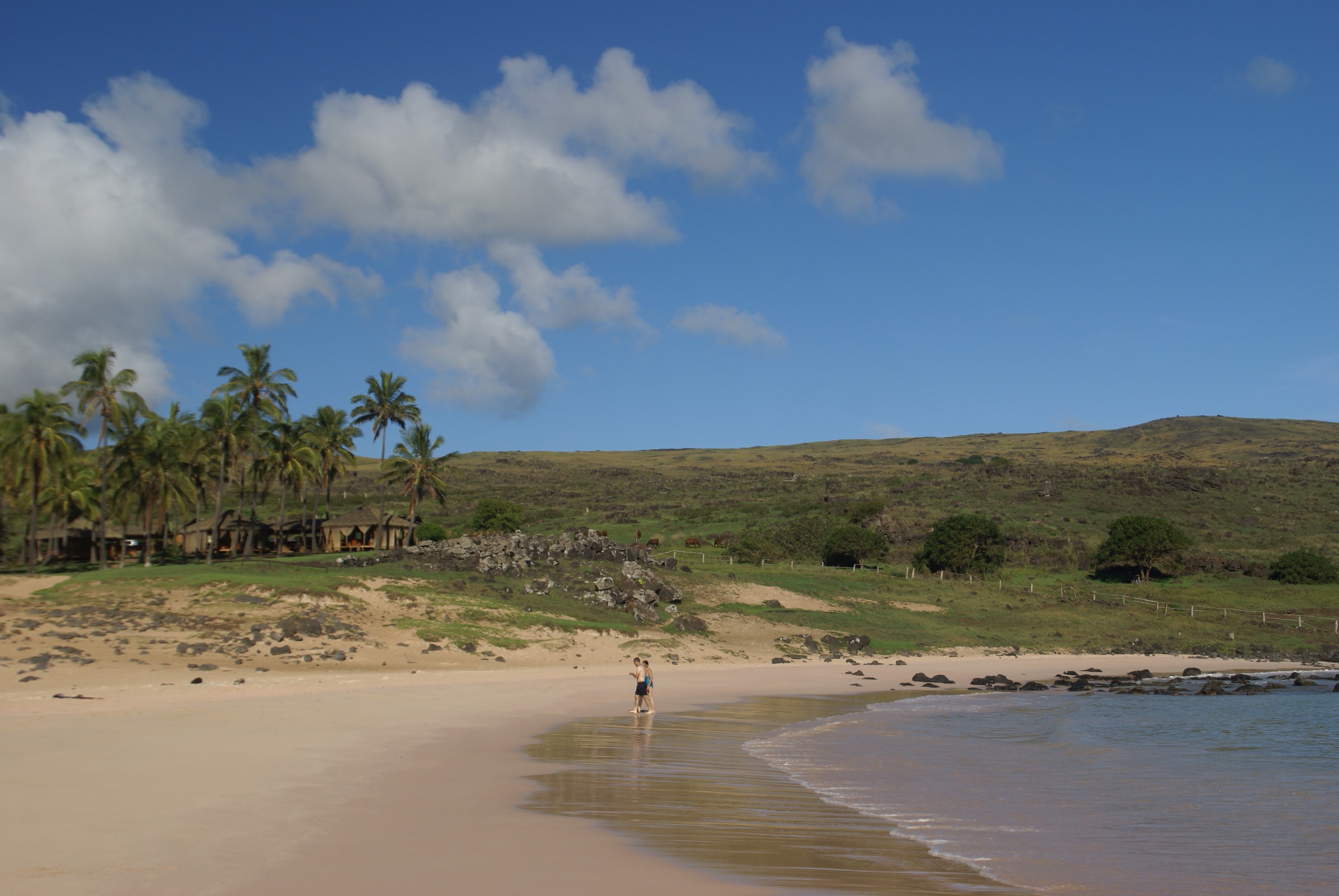
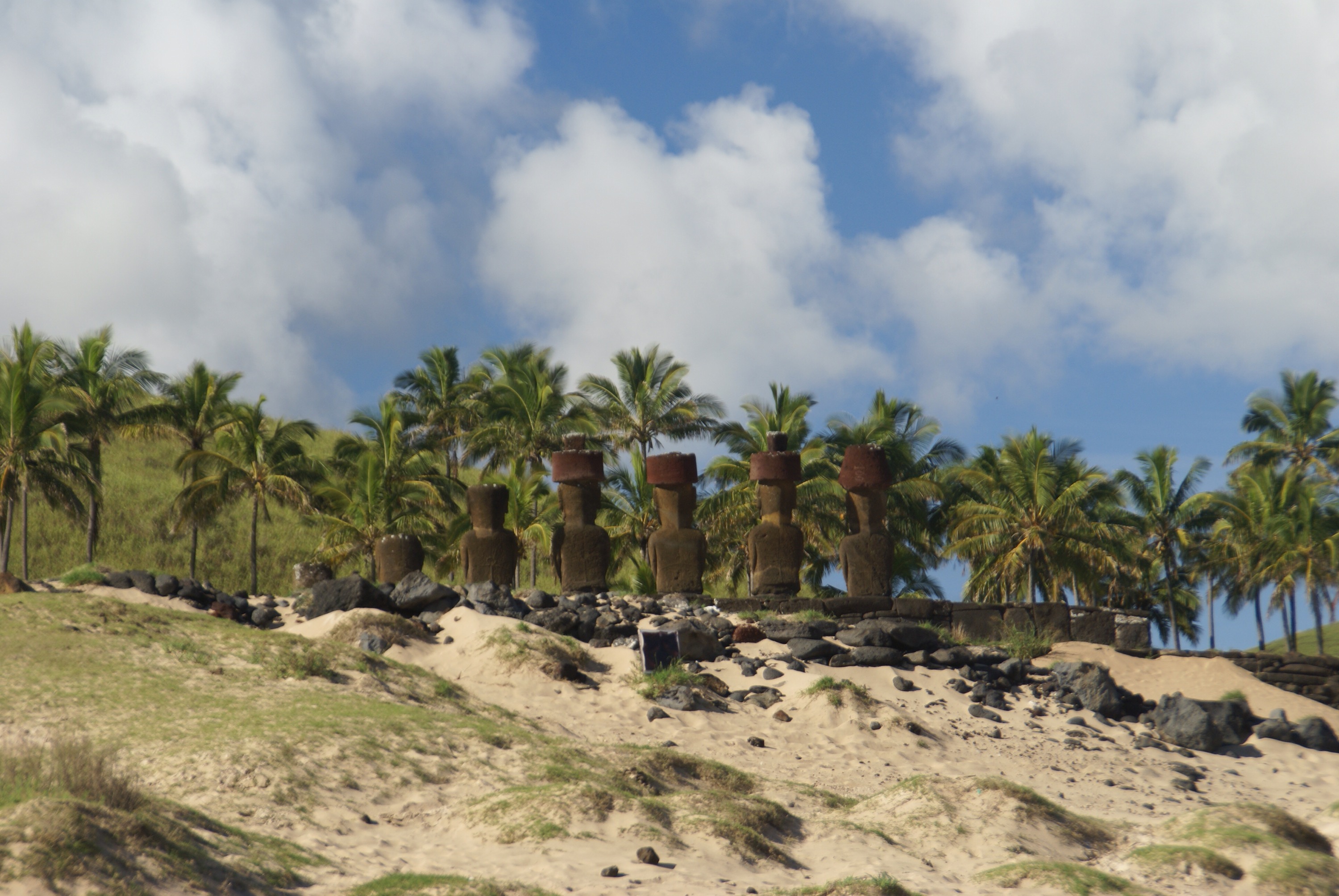
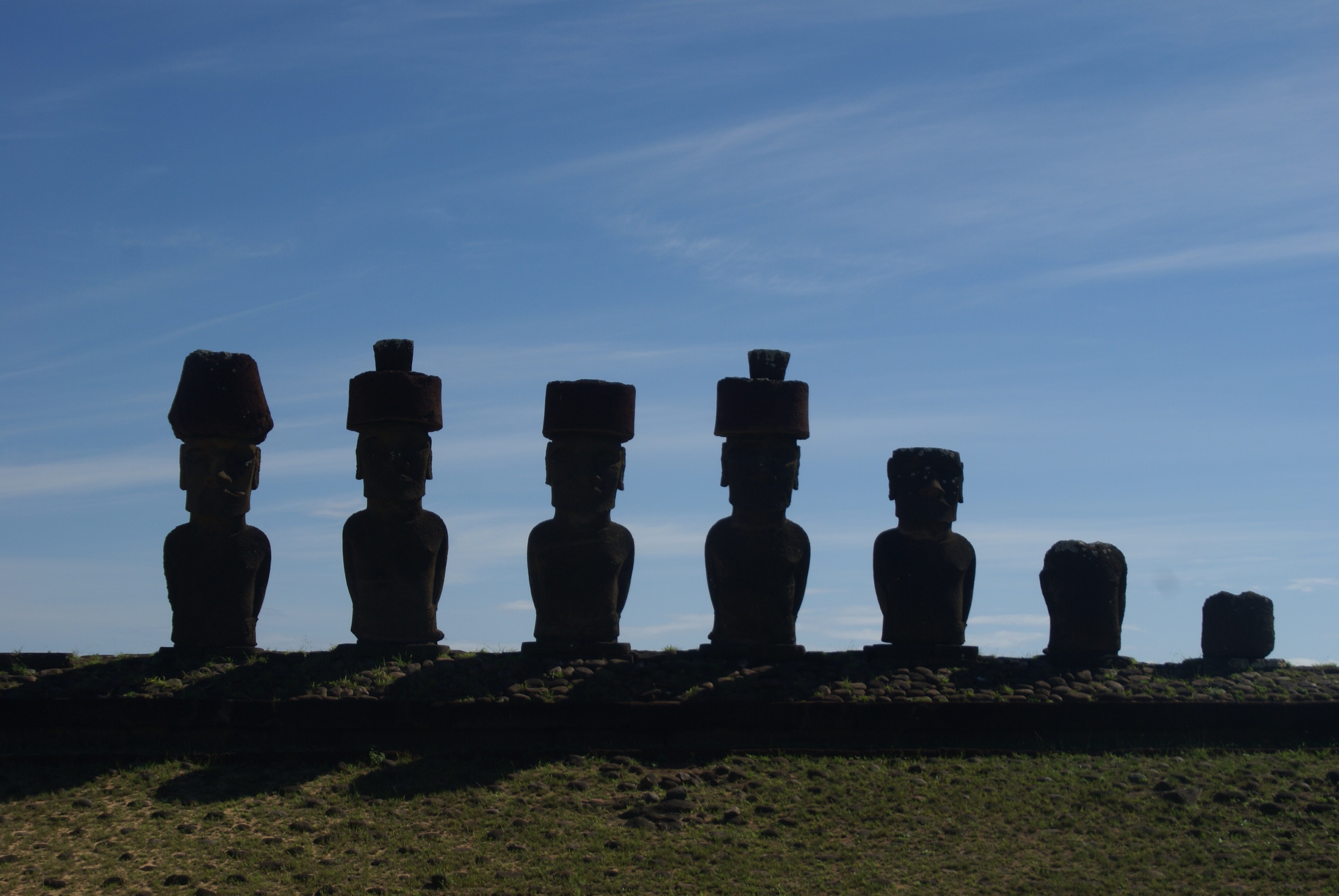
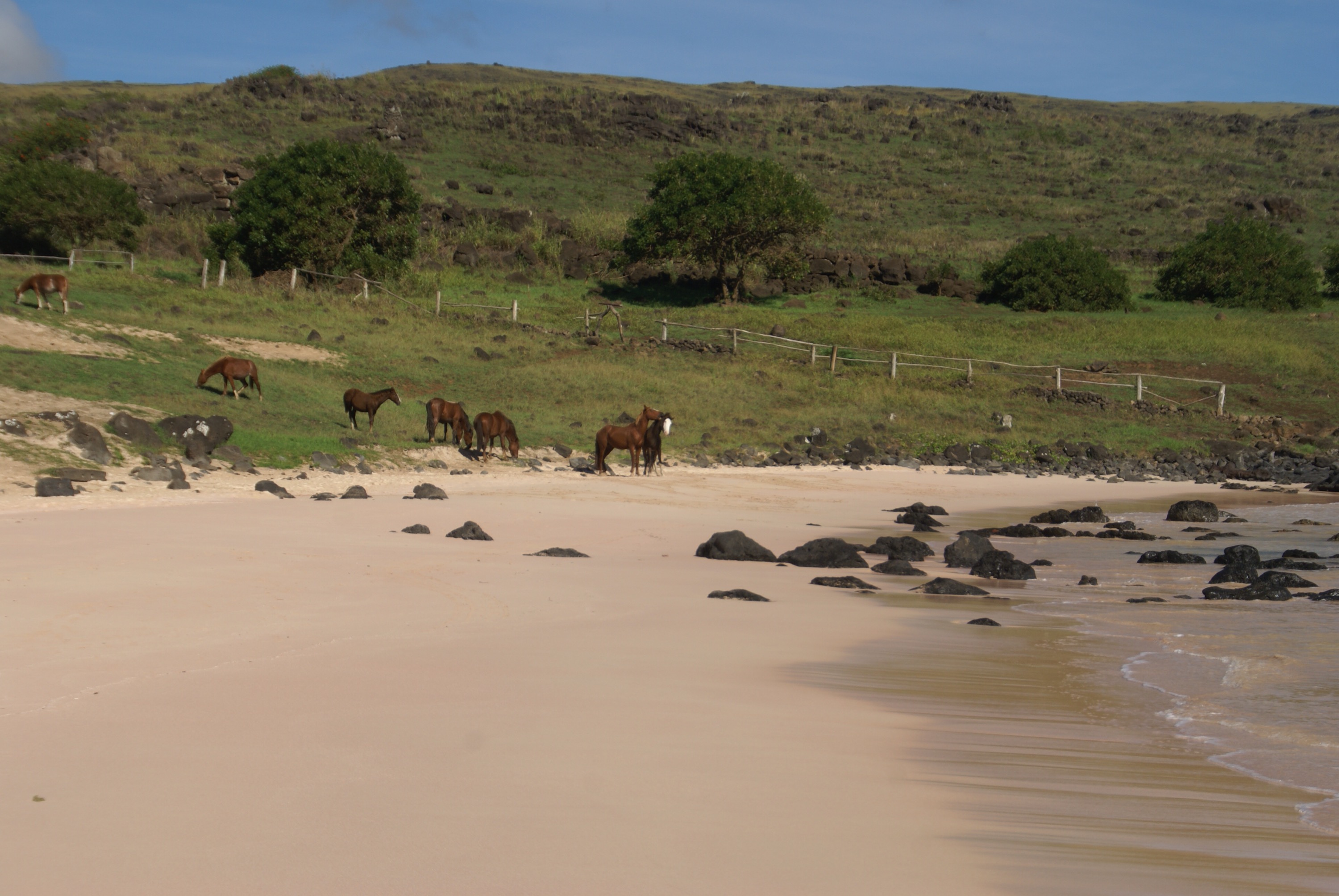
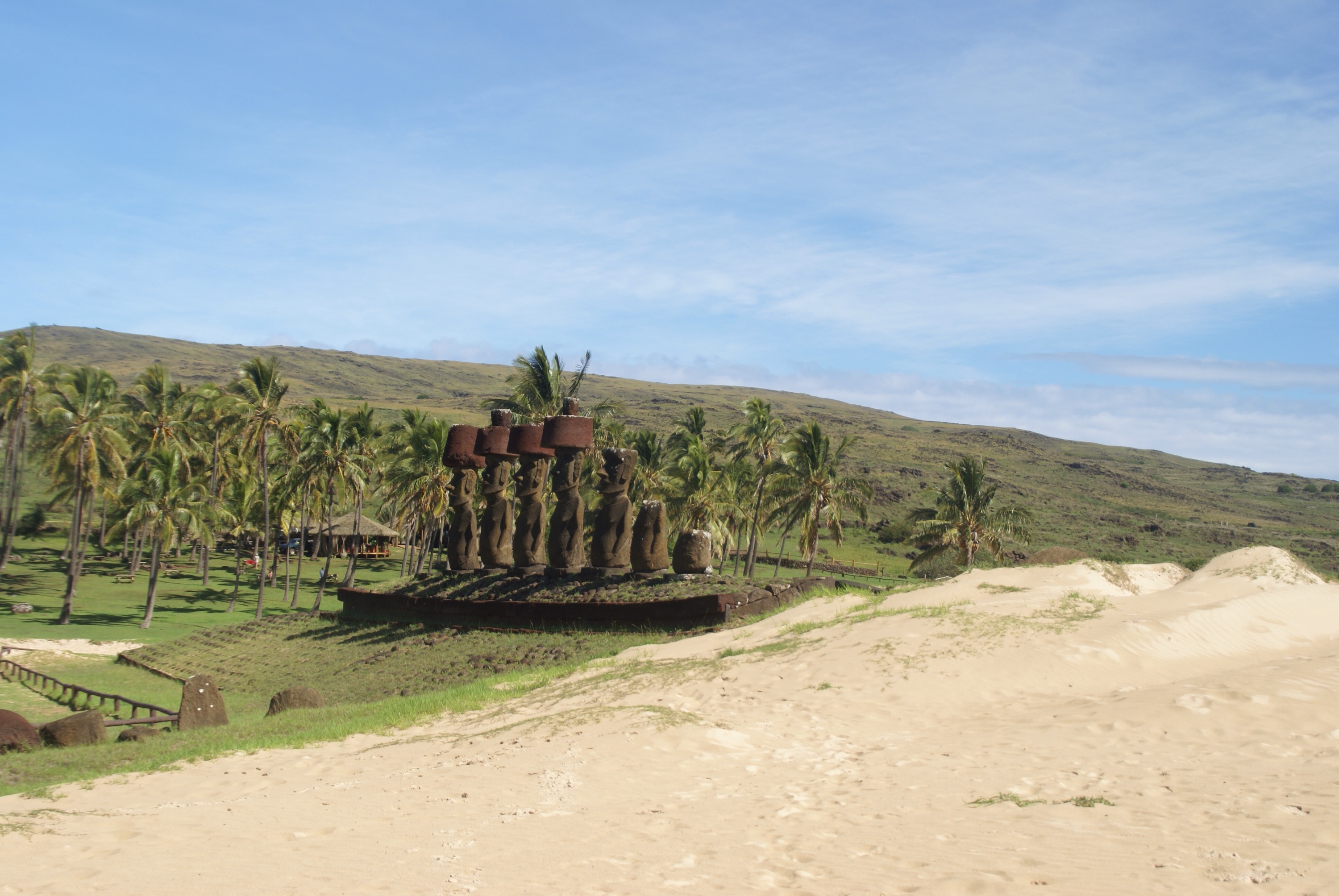
From the front of our Cabana was a hike up to the crater of Ranu Kau filled with a lake and reed beds. Nearby was the ceremonial village where the tribes used to compete in the Birdman competition, a dangerous task to collect the first Sooty Tern egg of the season. The path between them was rather overgrown with bushes, the girls had great fun swishing their way through them.
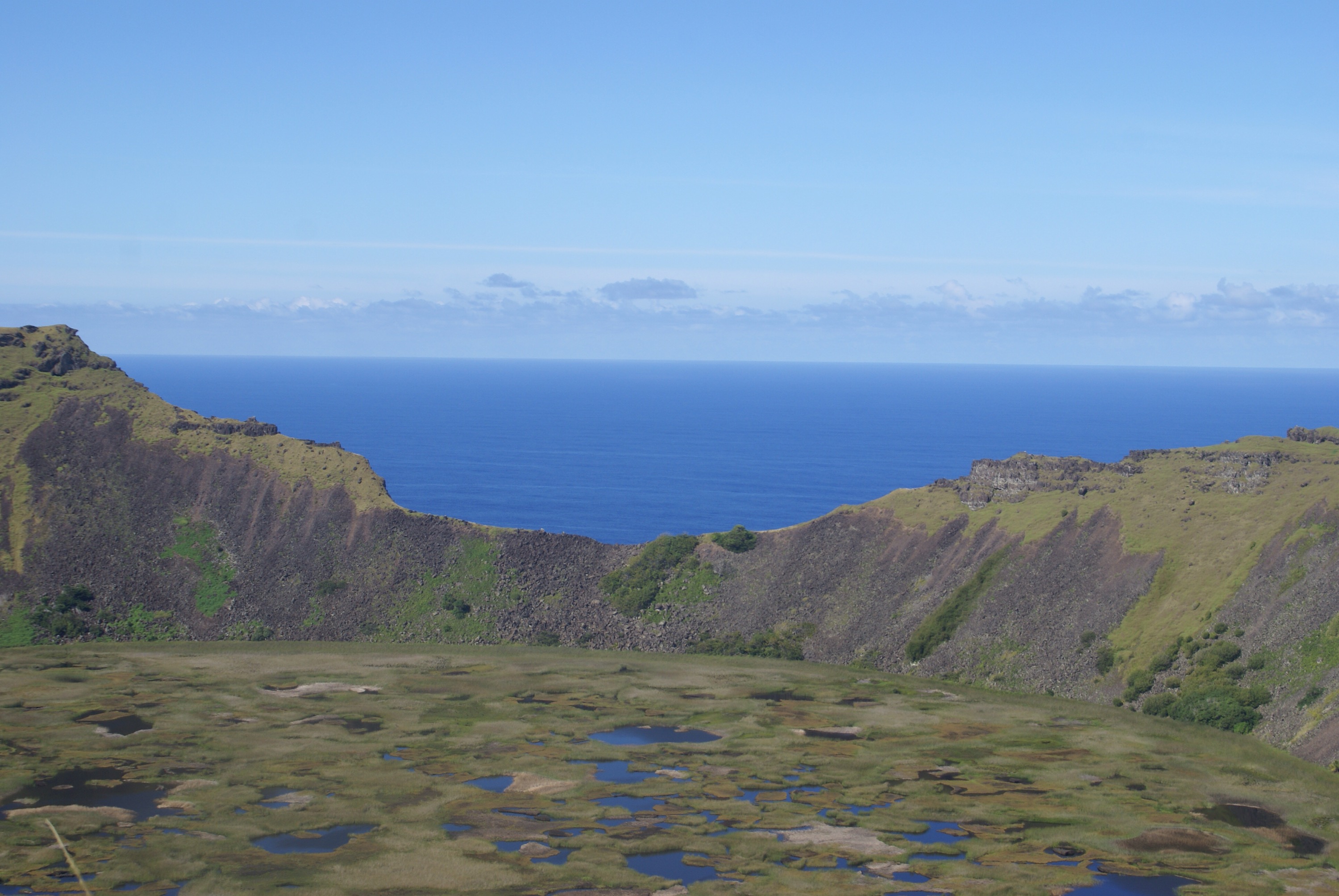
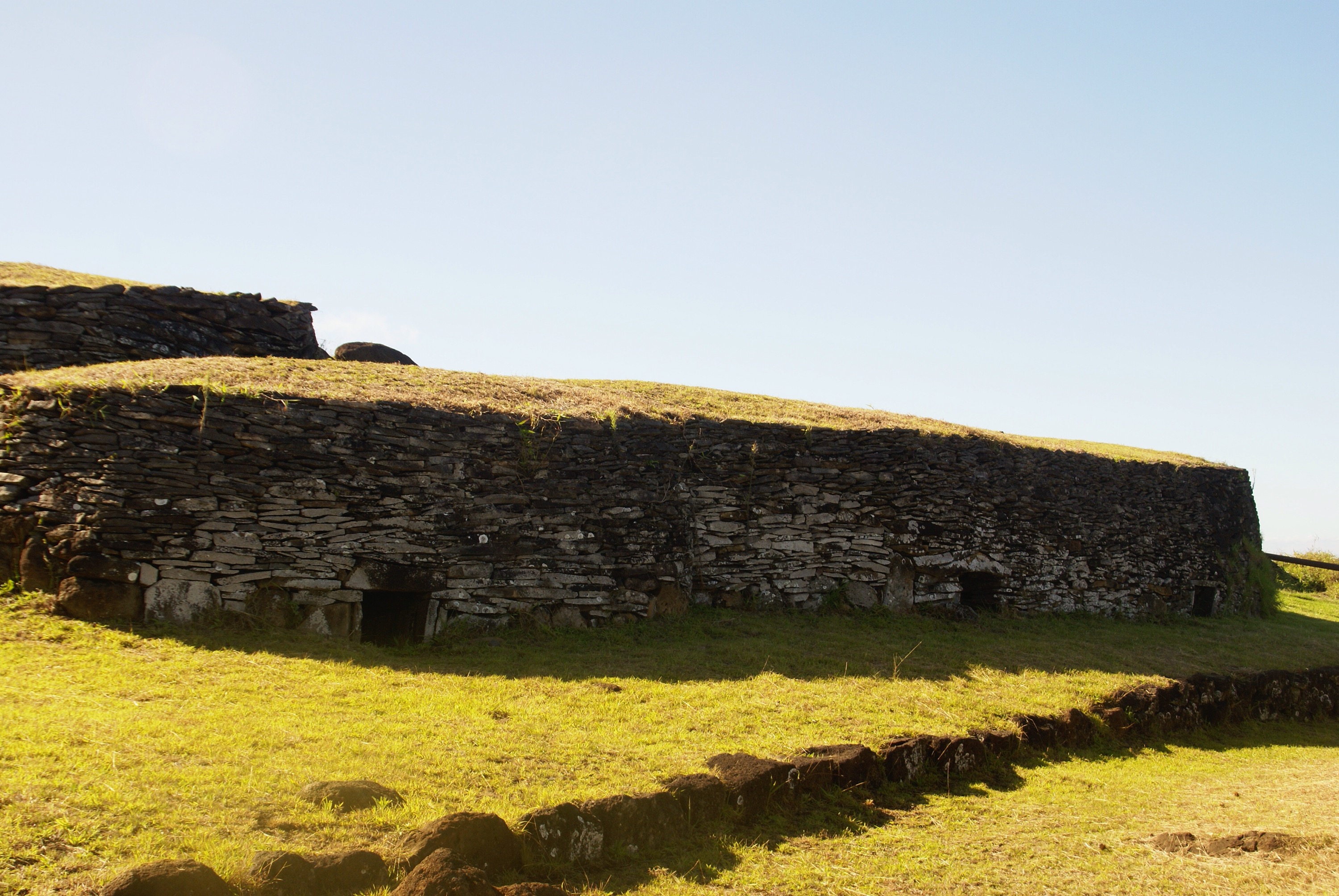
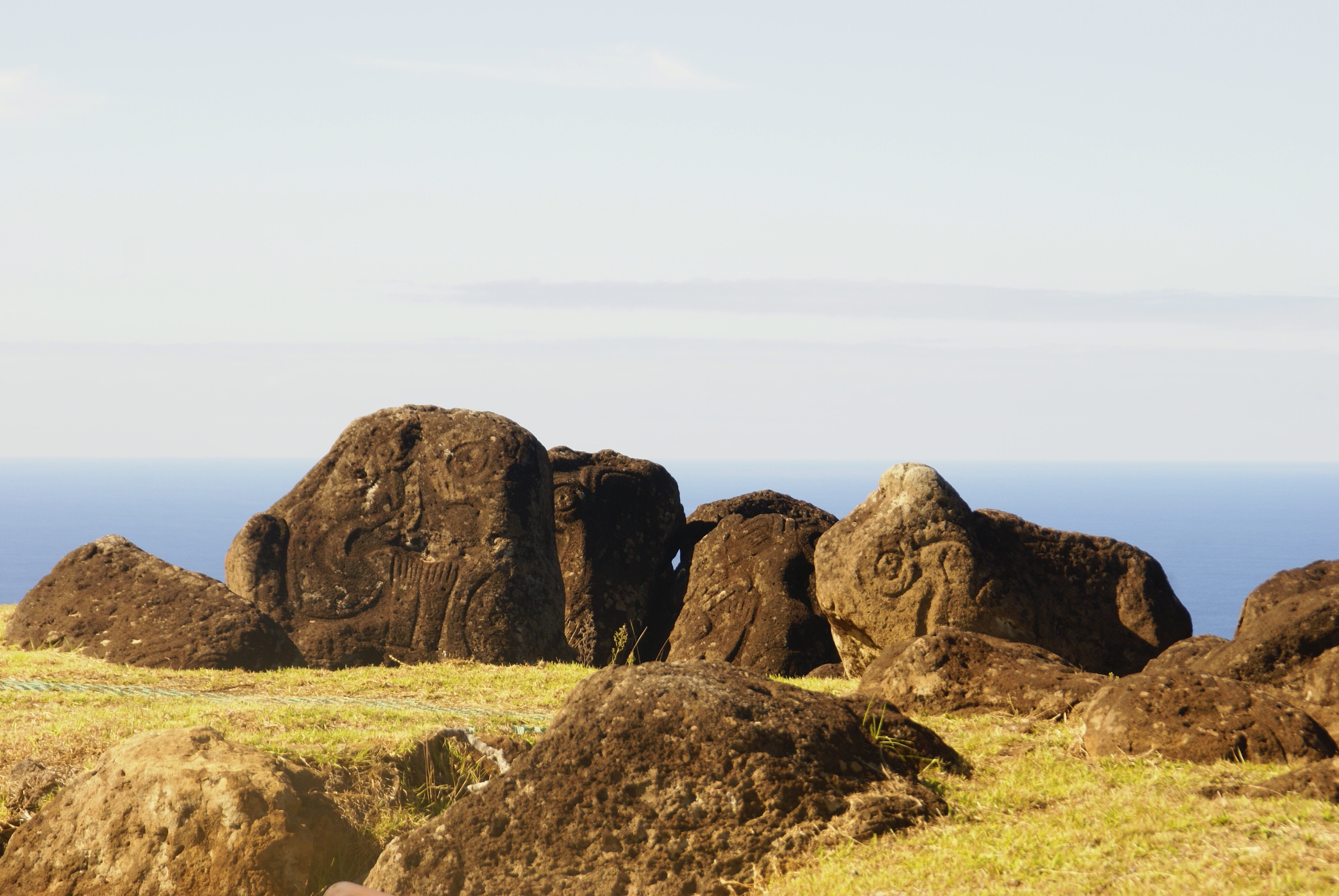
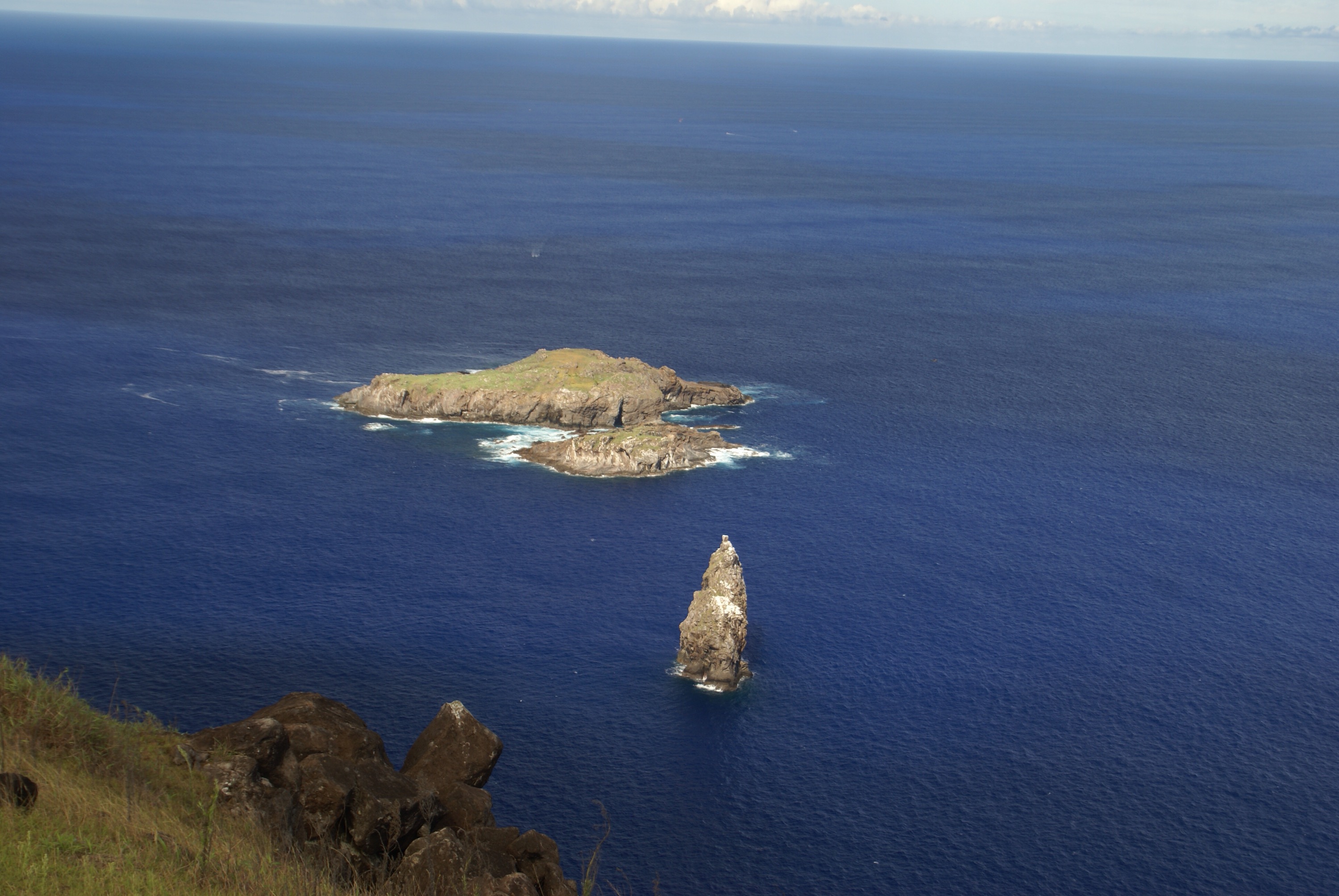
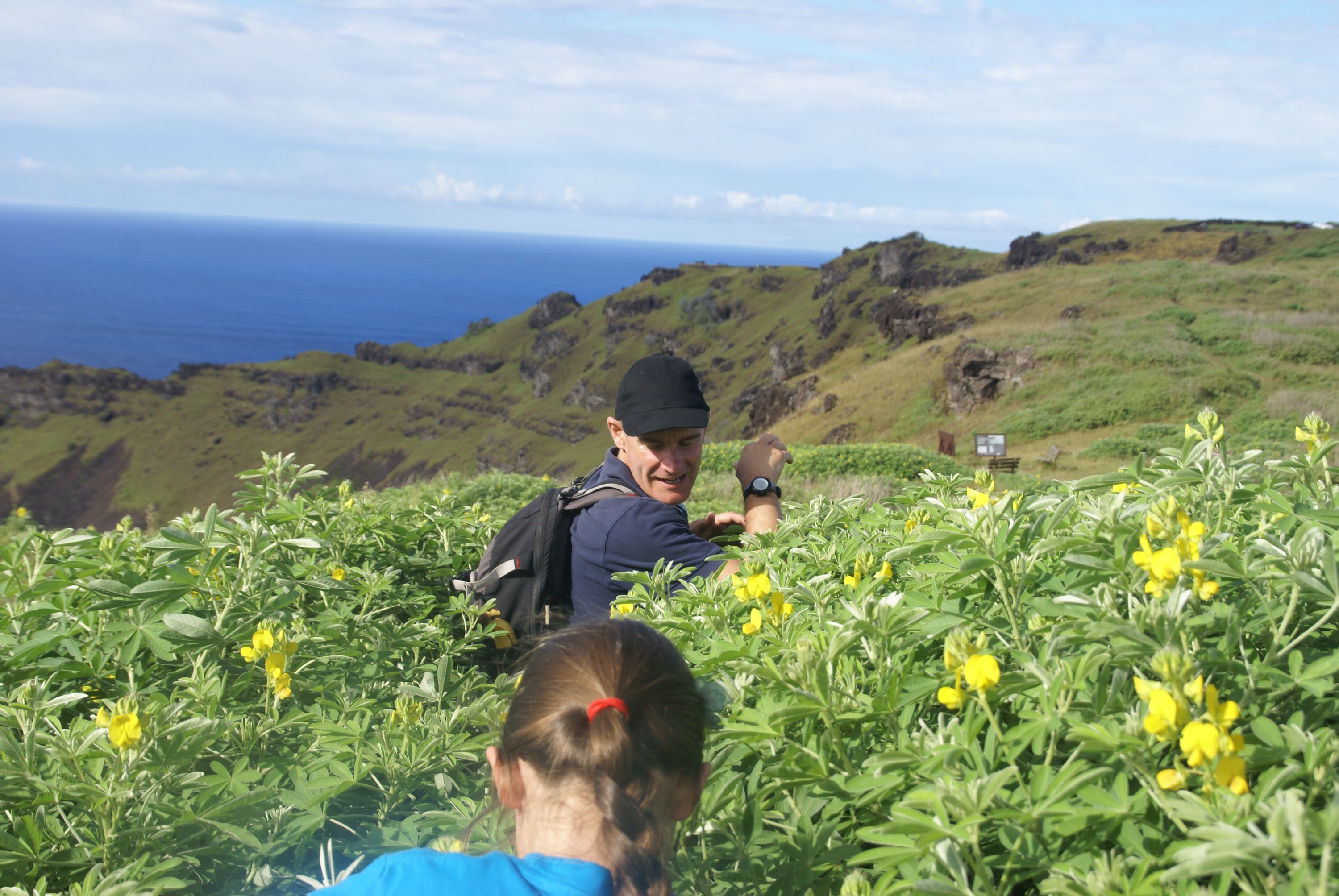
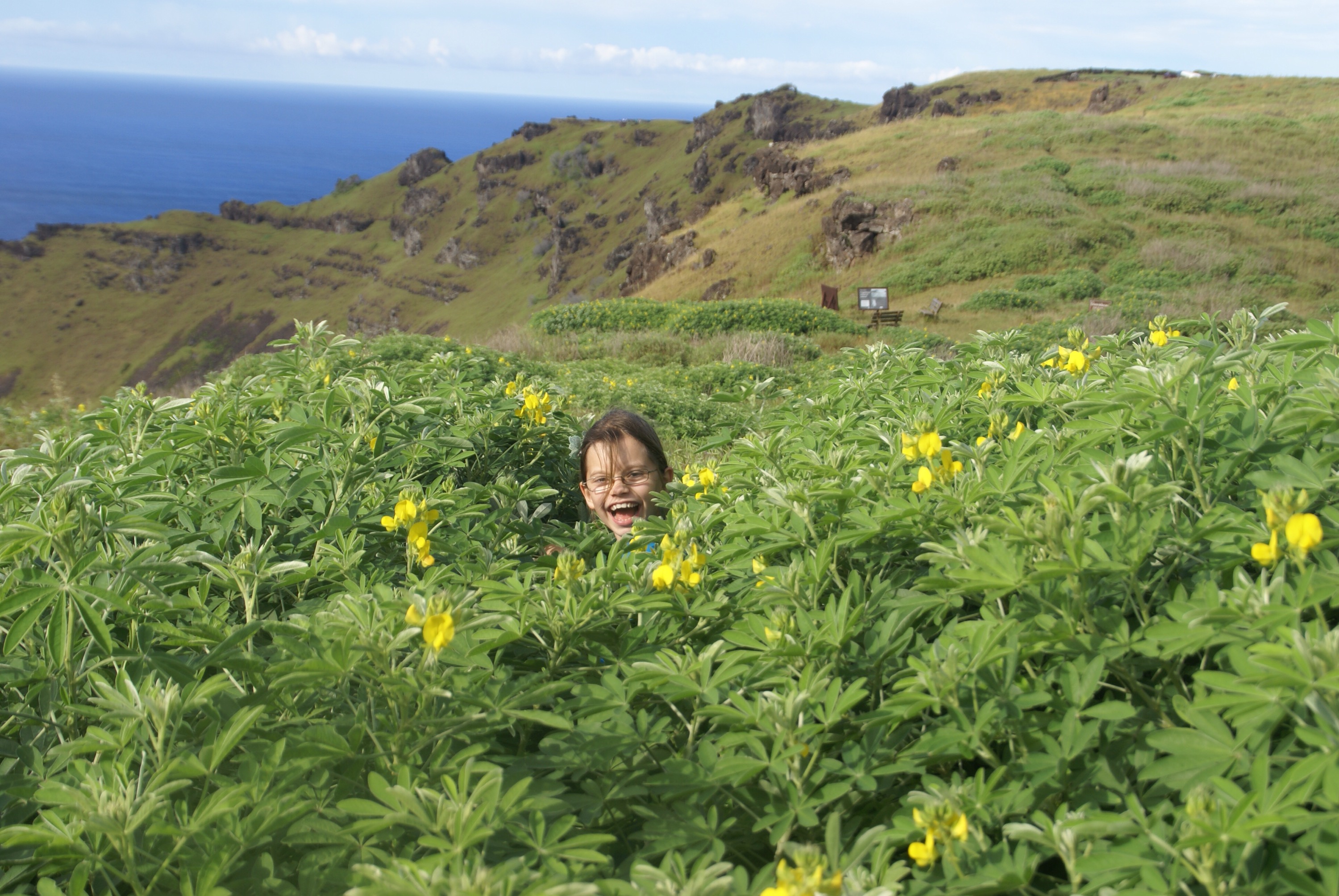
We've had a great time in Easter Island, relaxing and learning about such a different culture. It has felt very different from South America, more like Polynesia. Now it is back to the truck and hopefully if all the work has been done, back on the road again.
